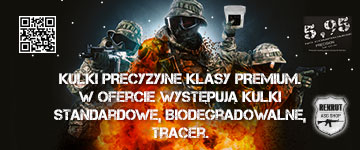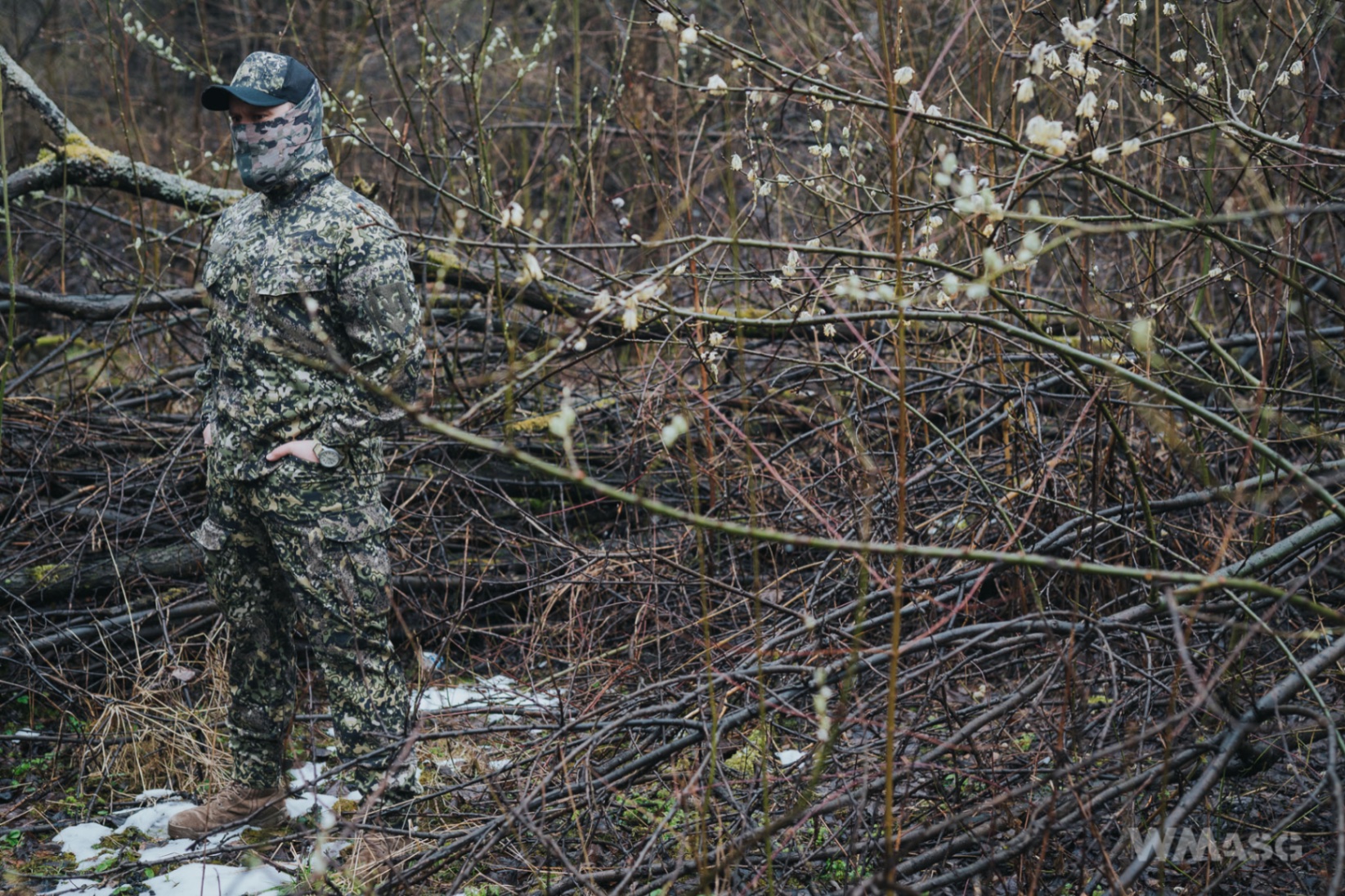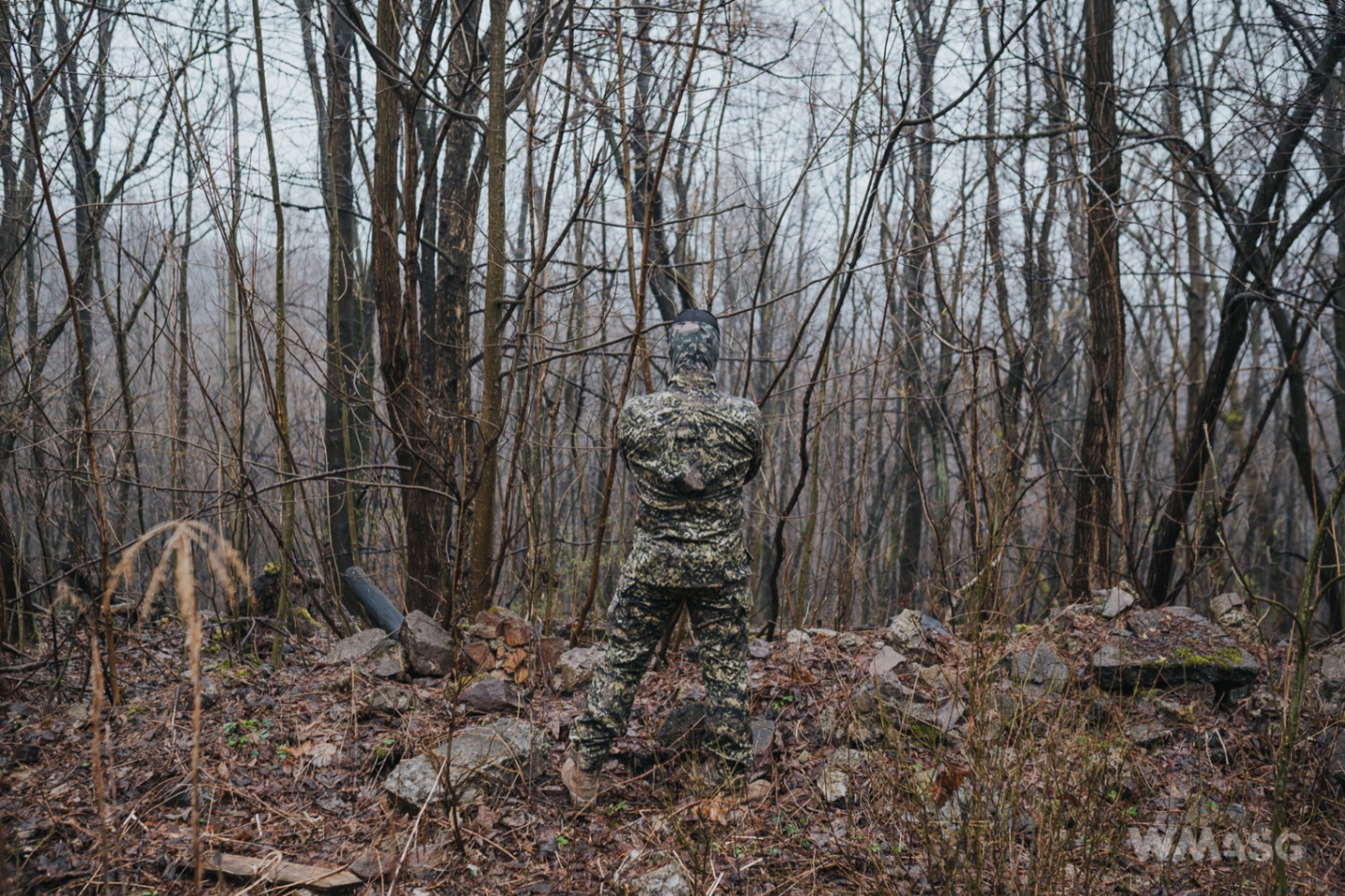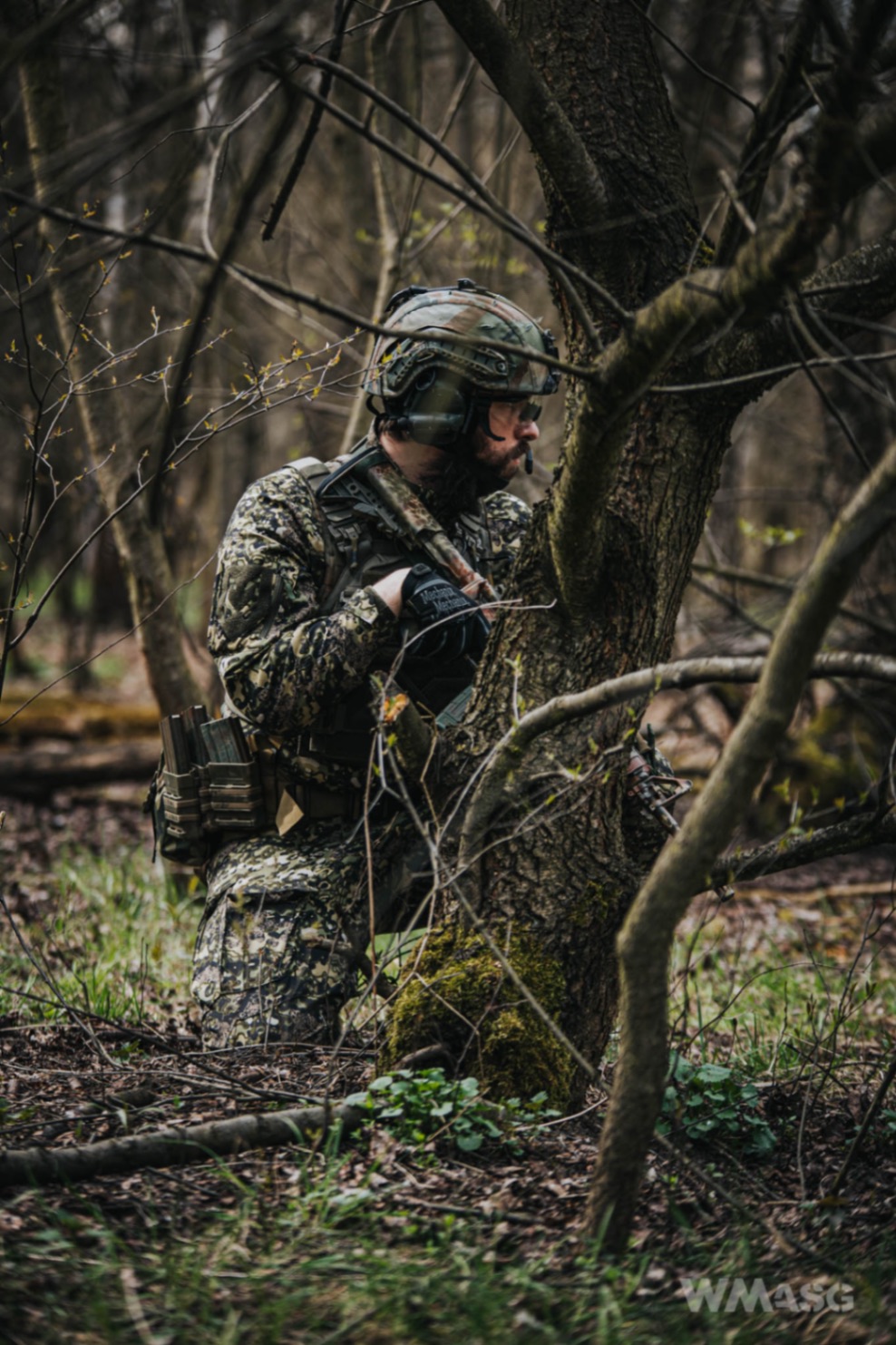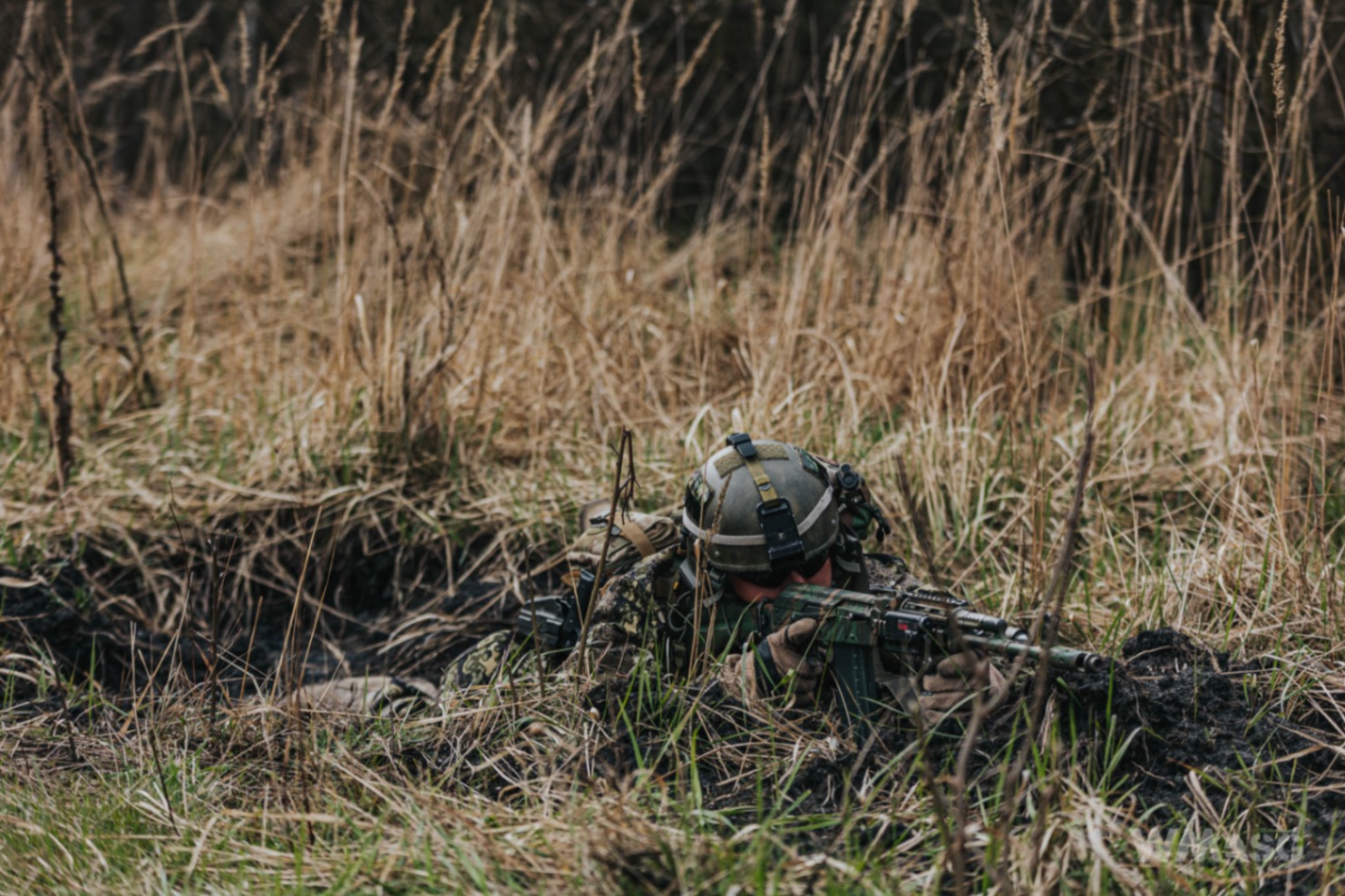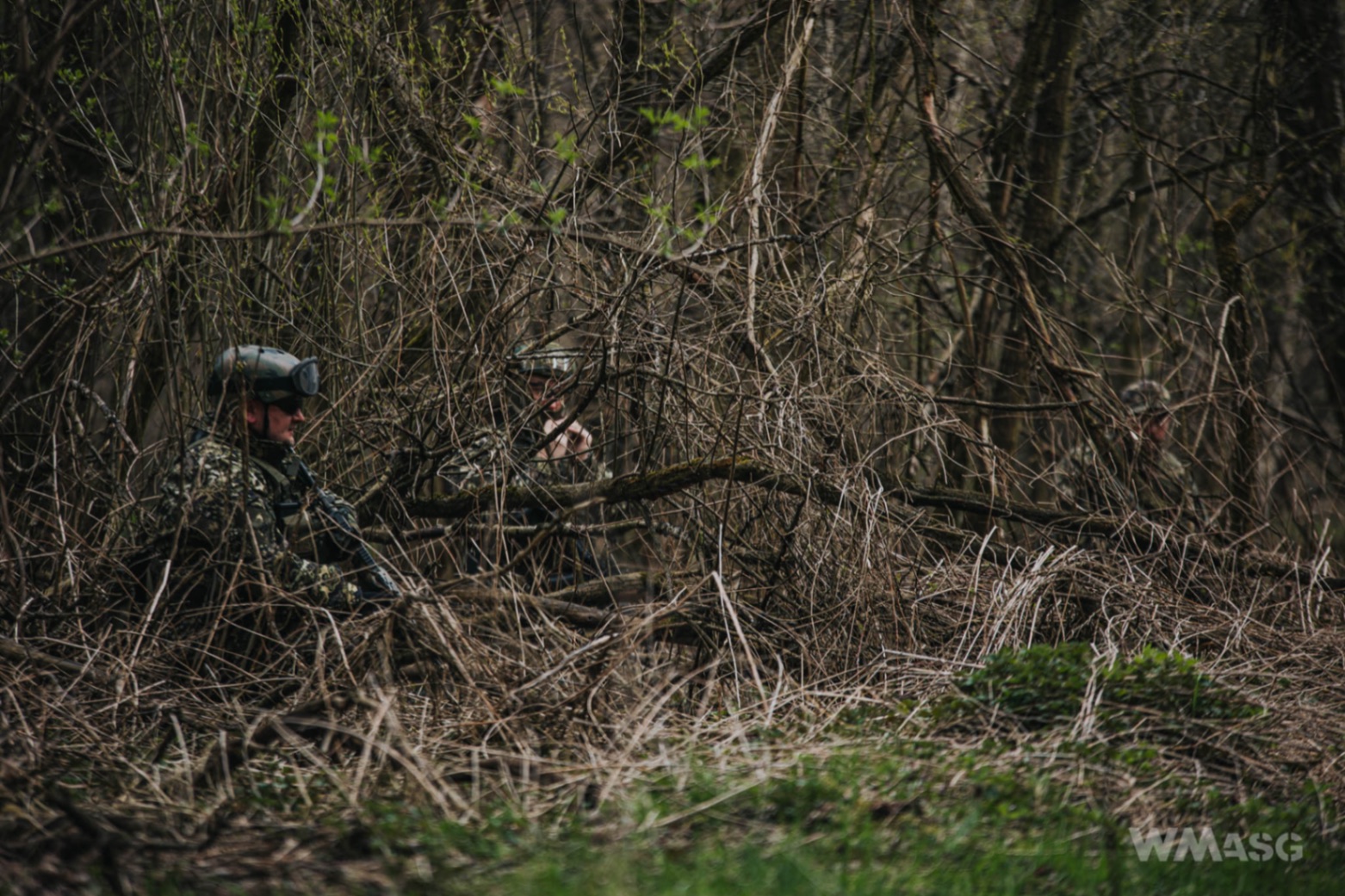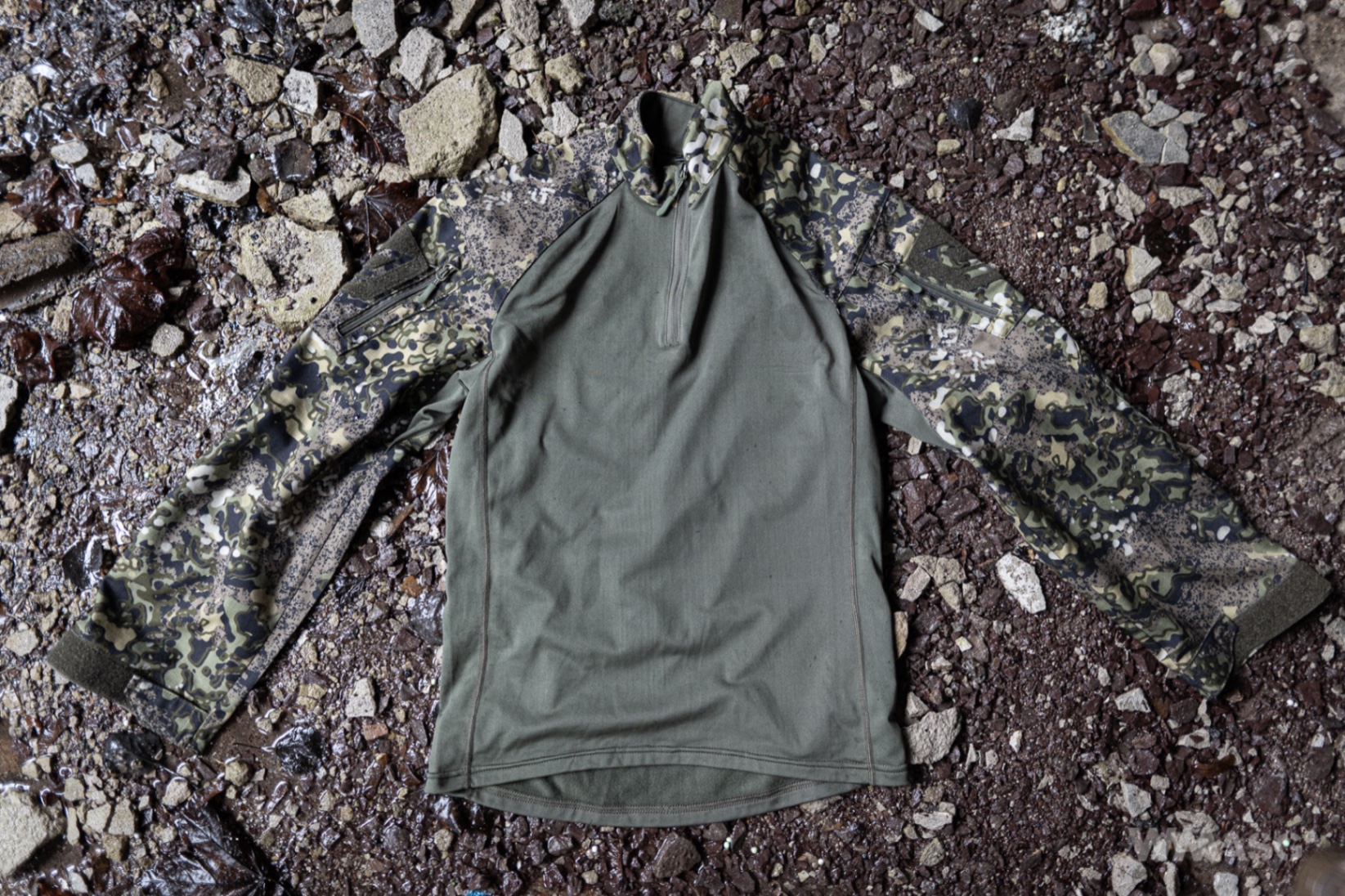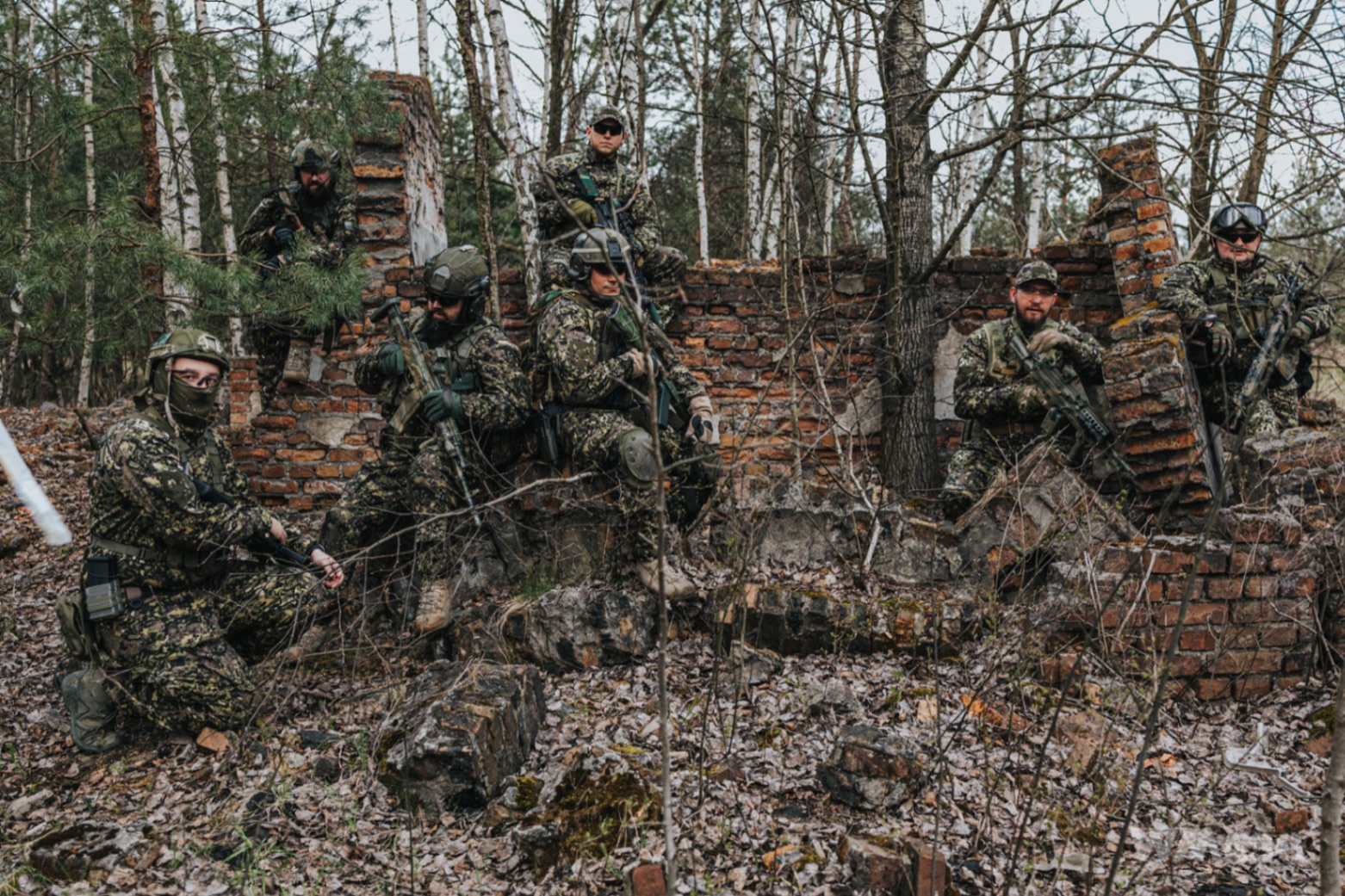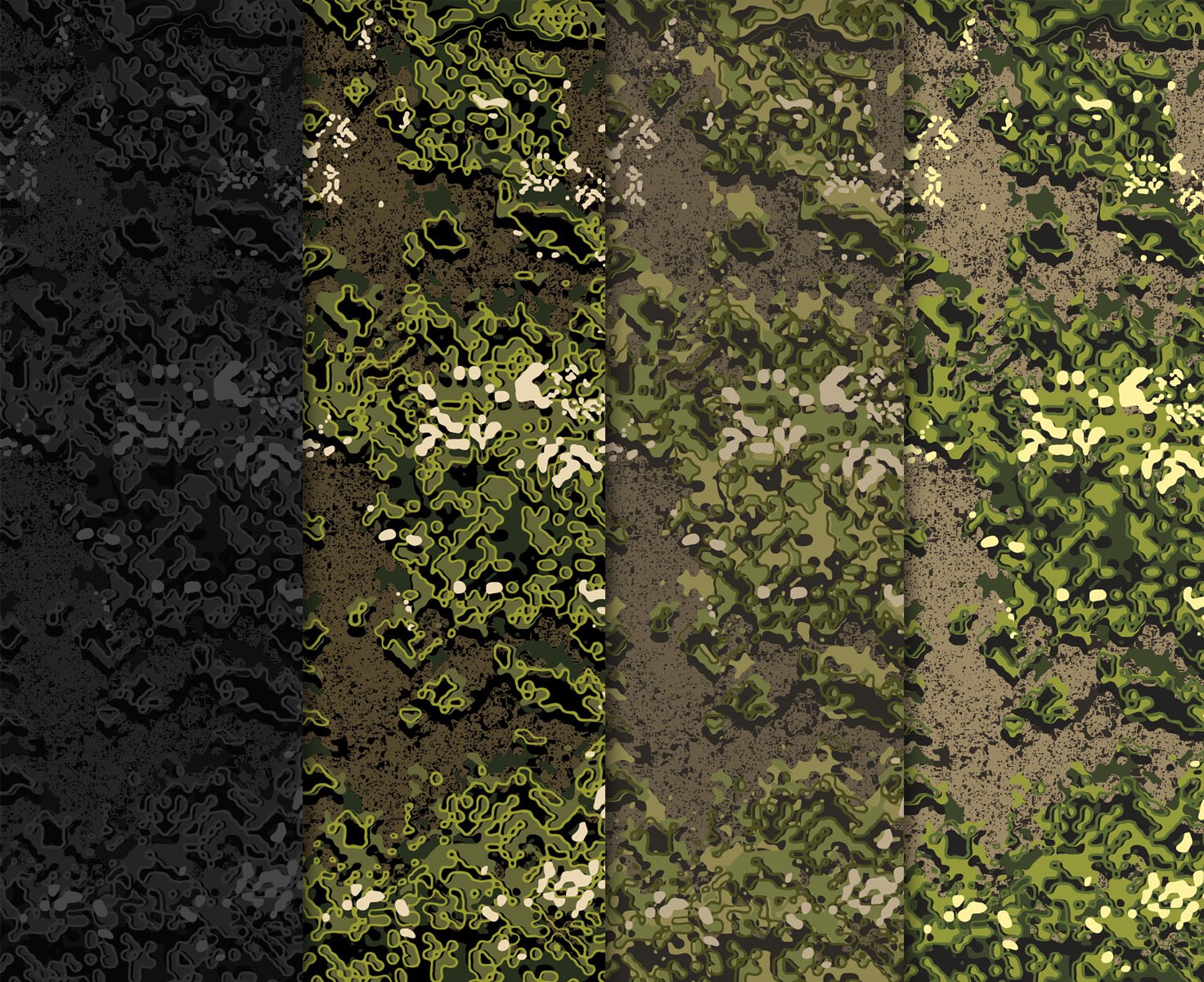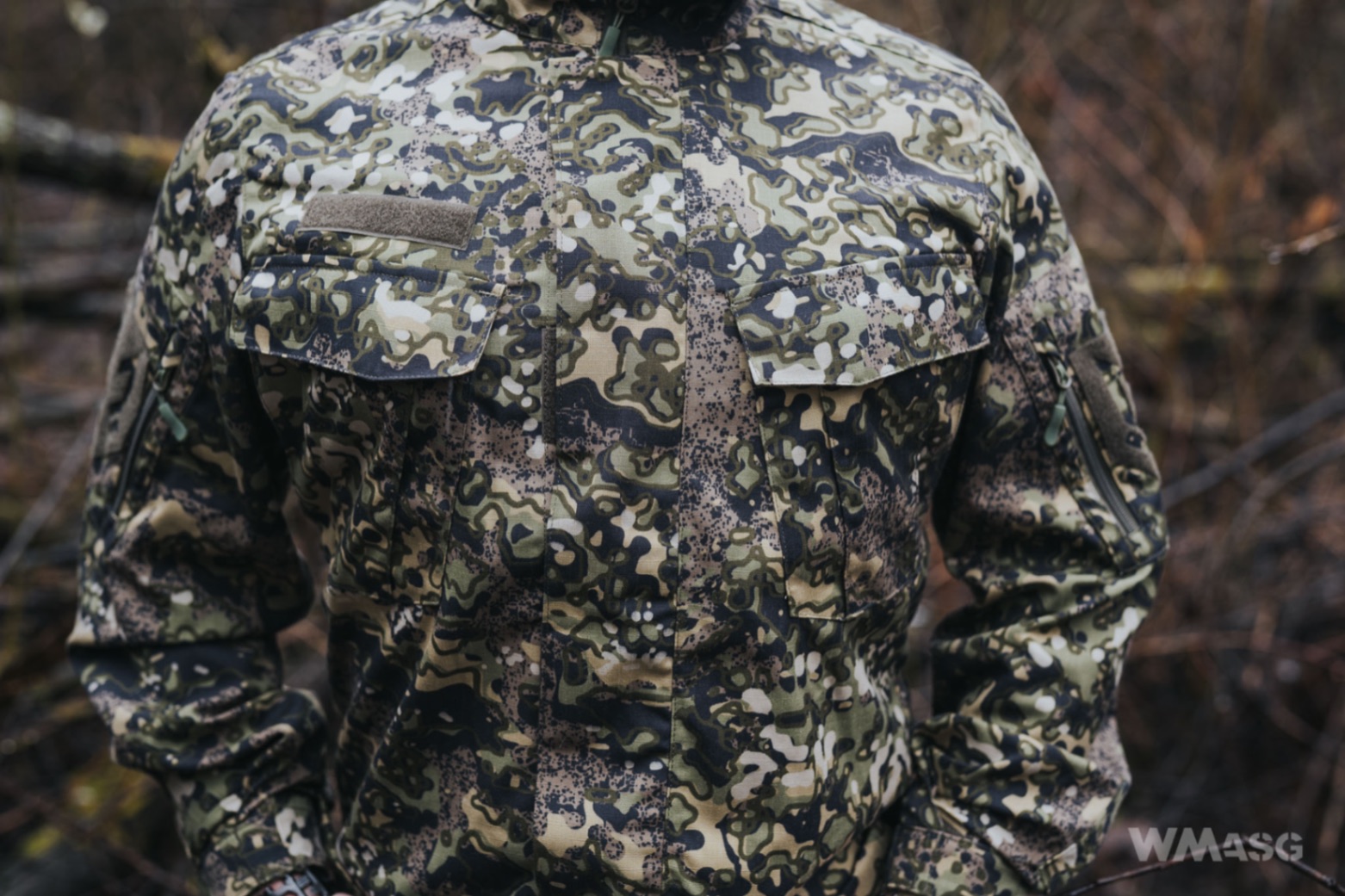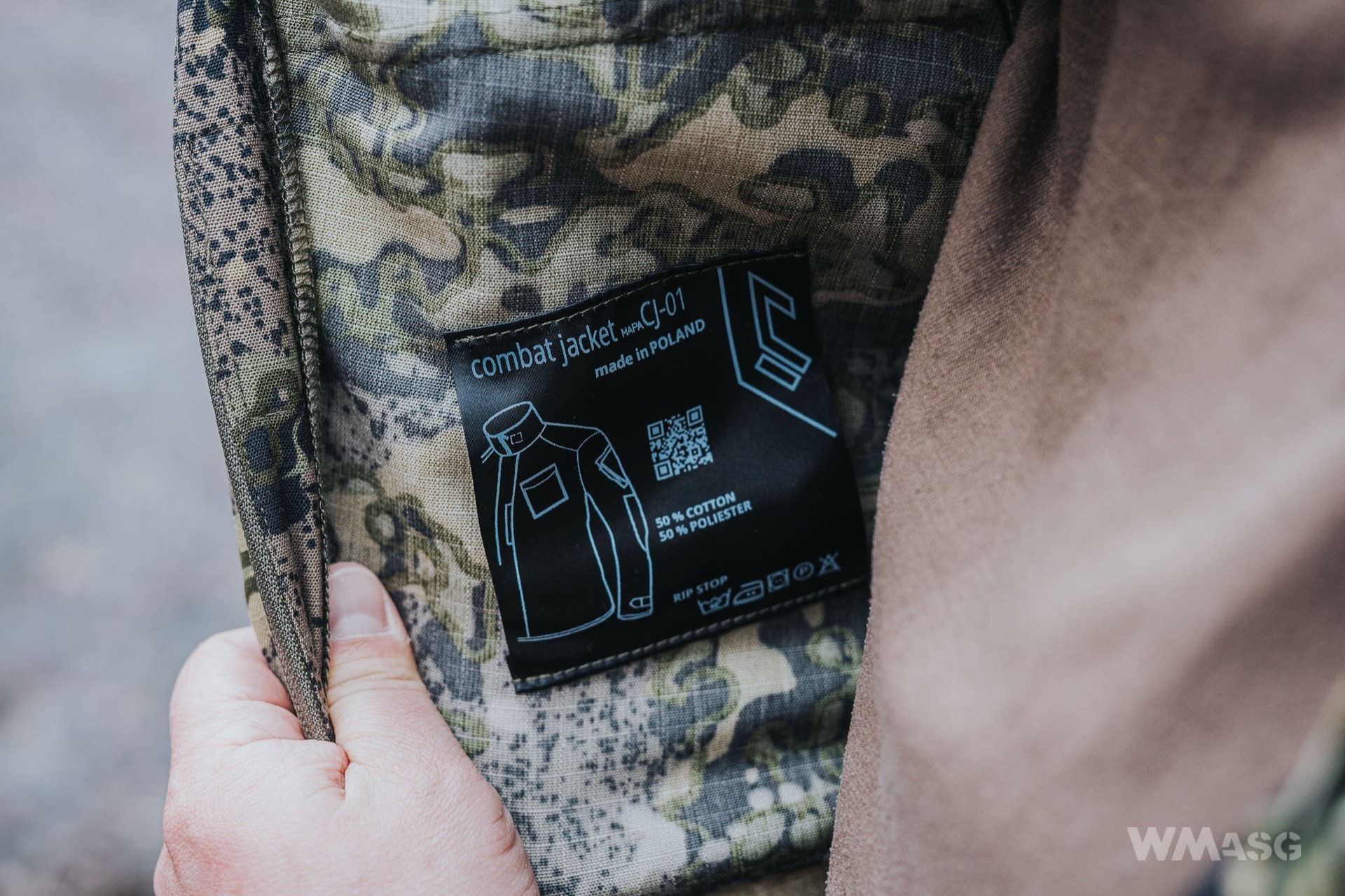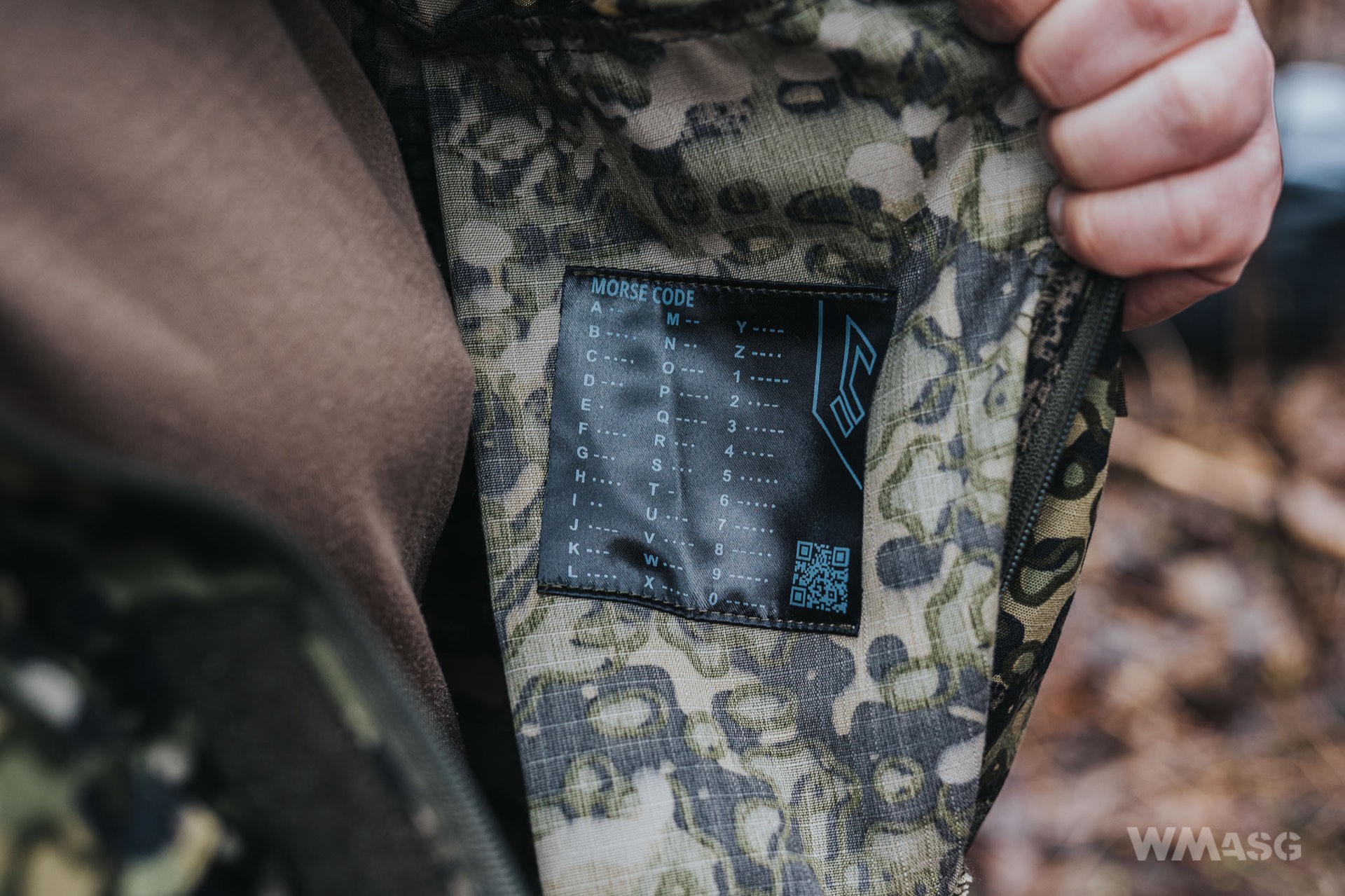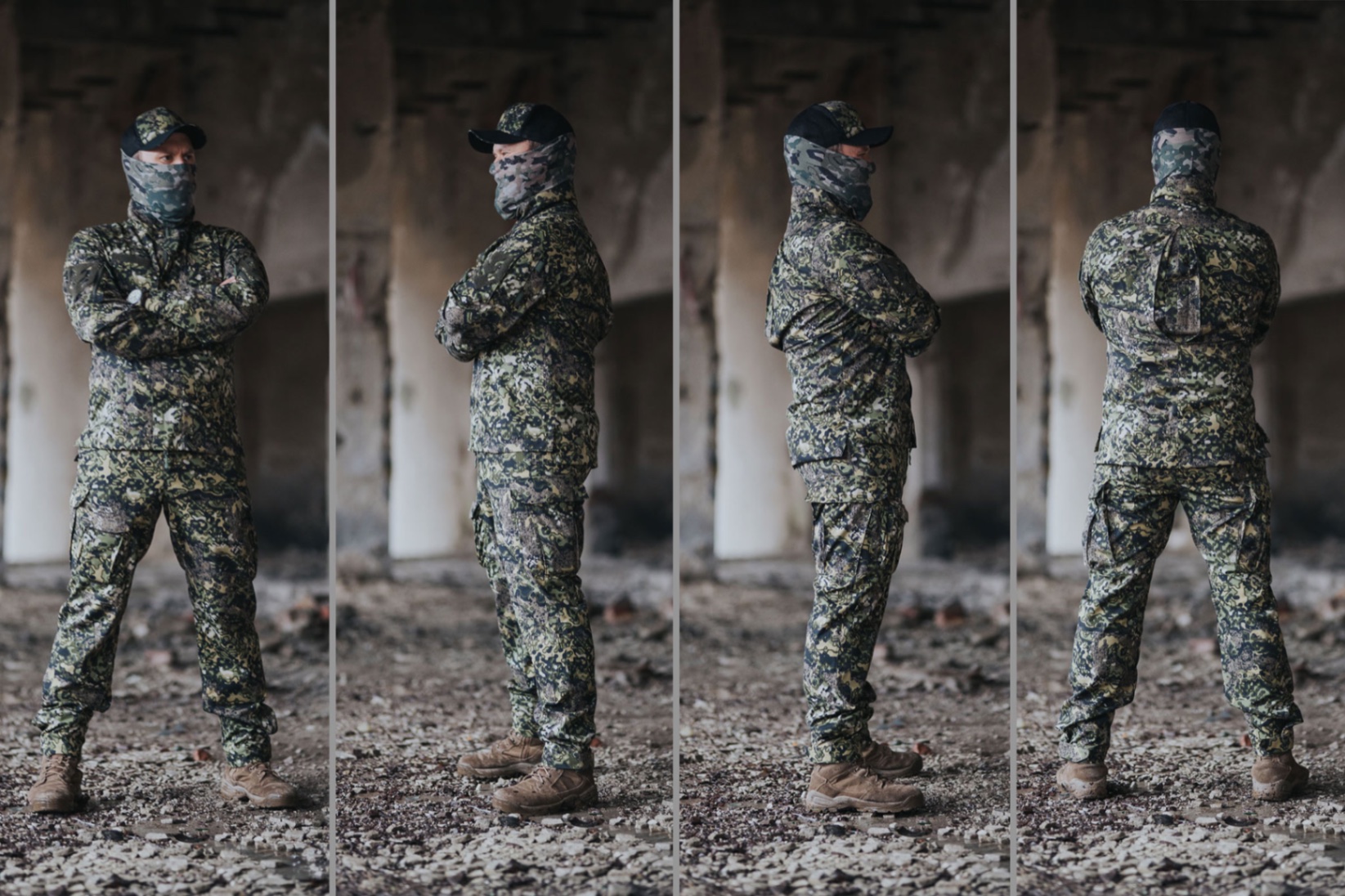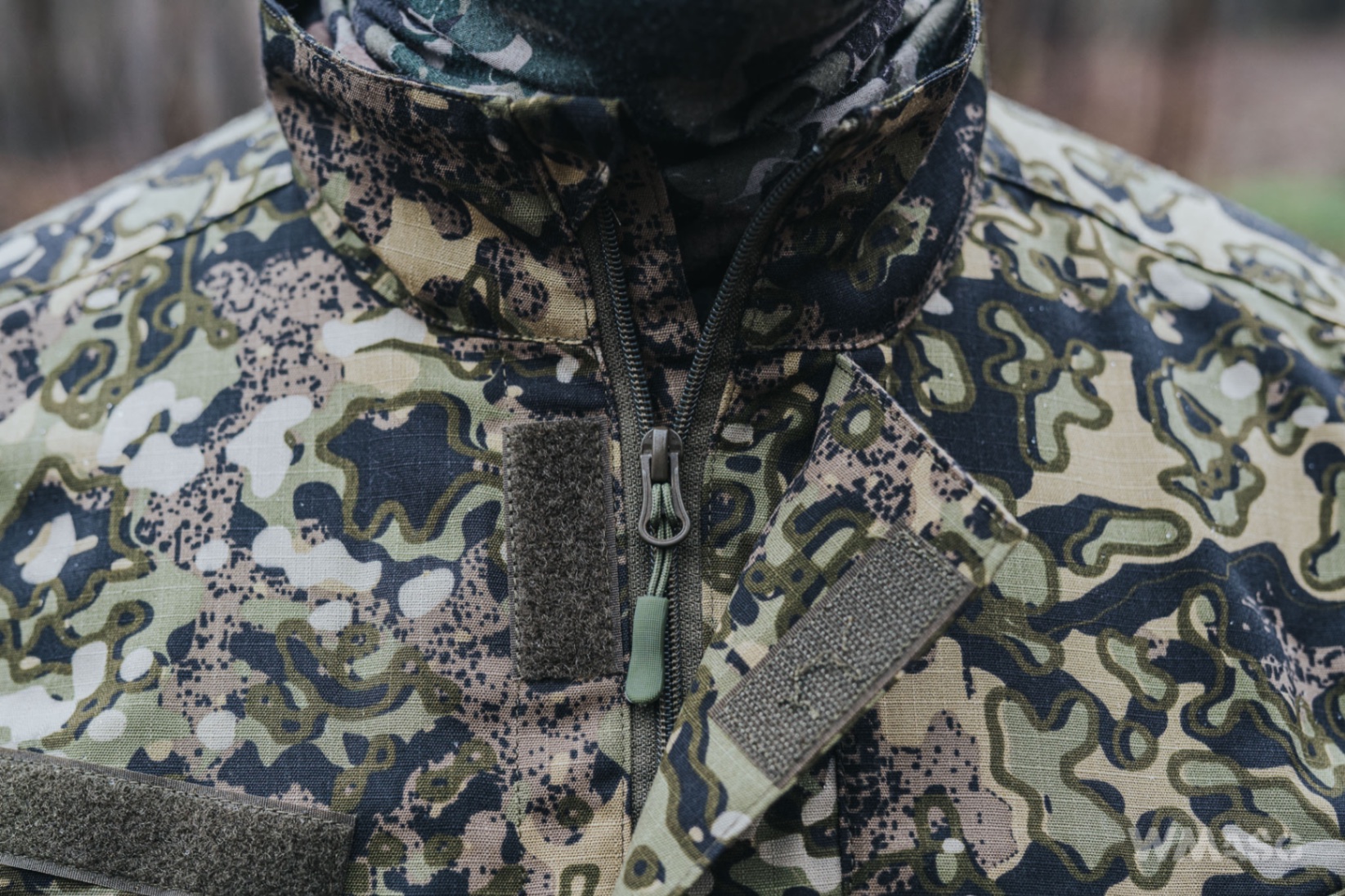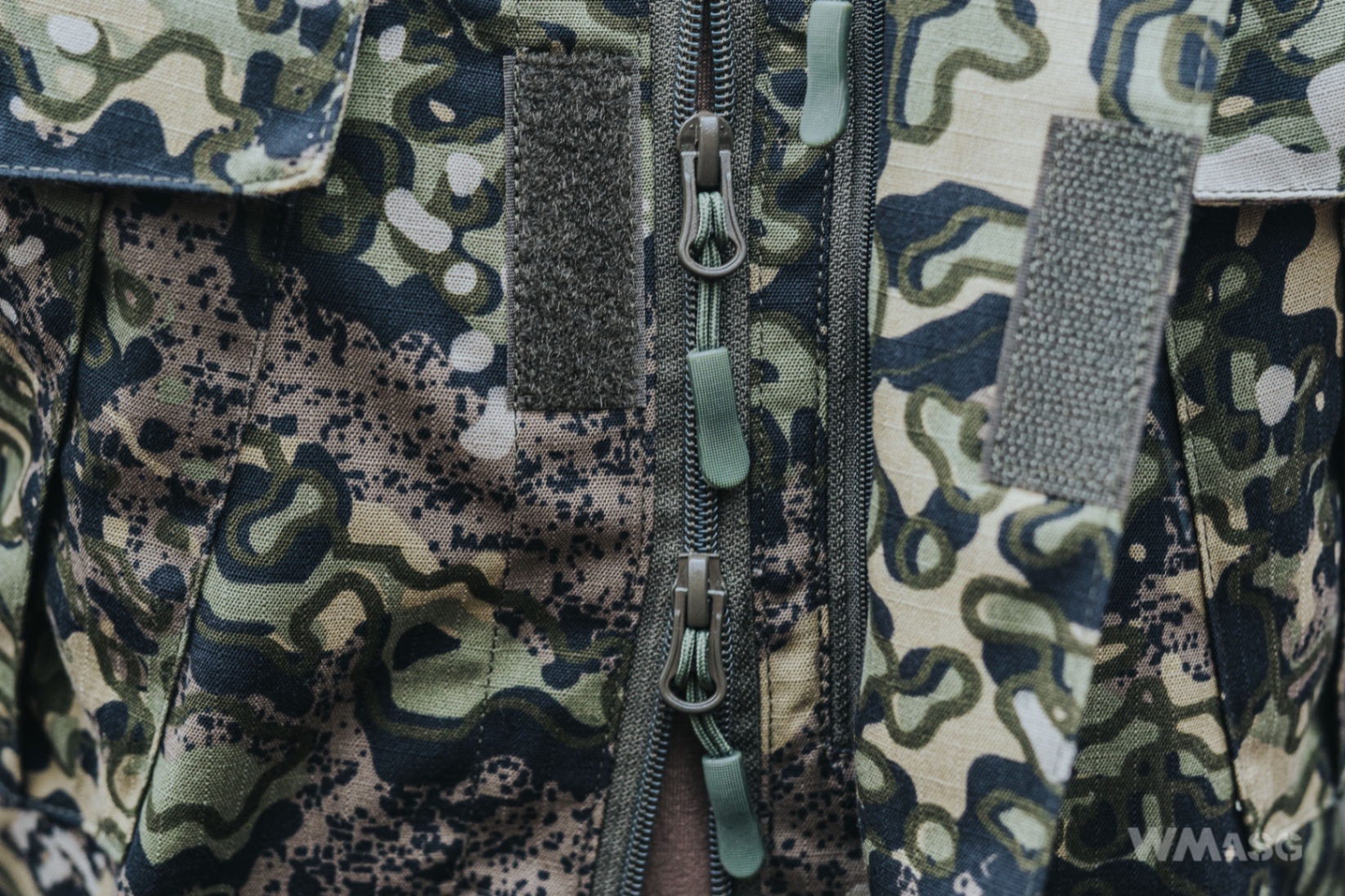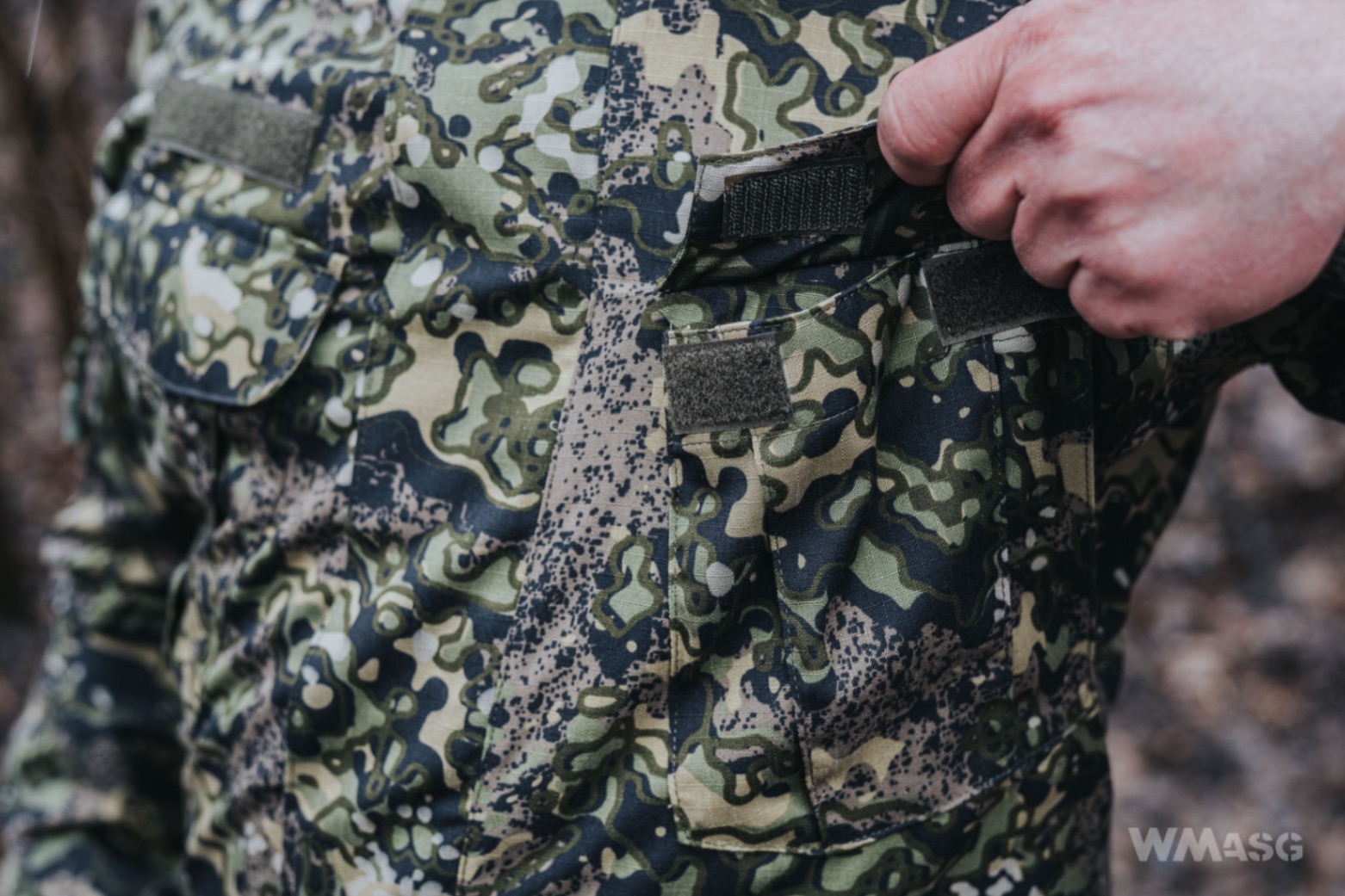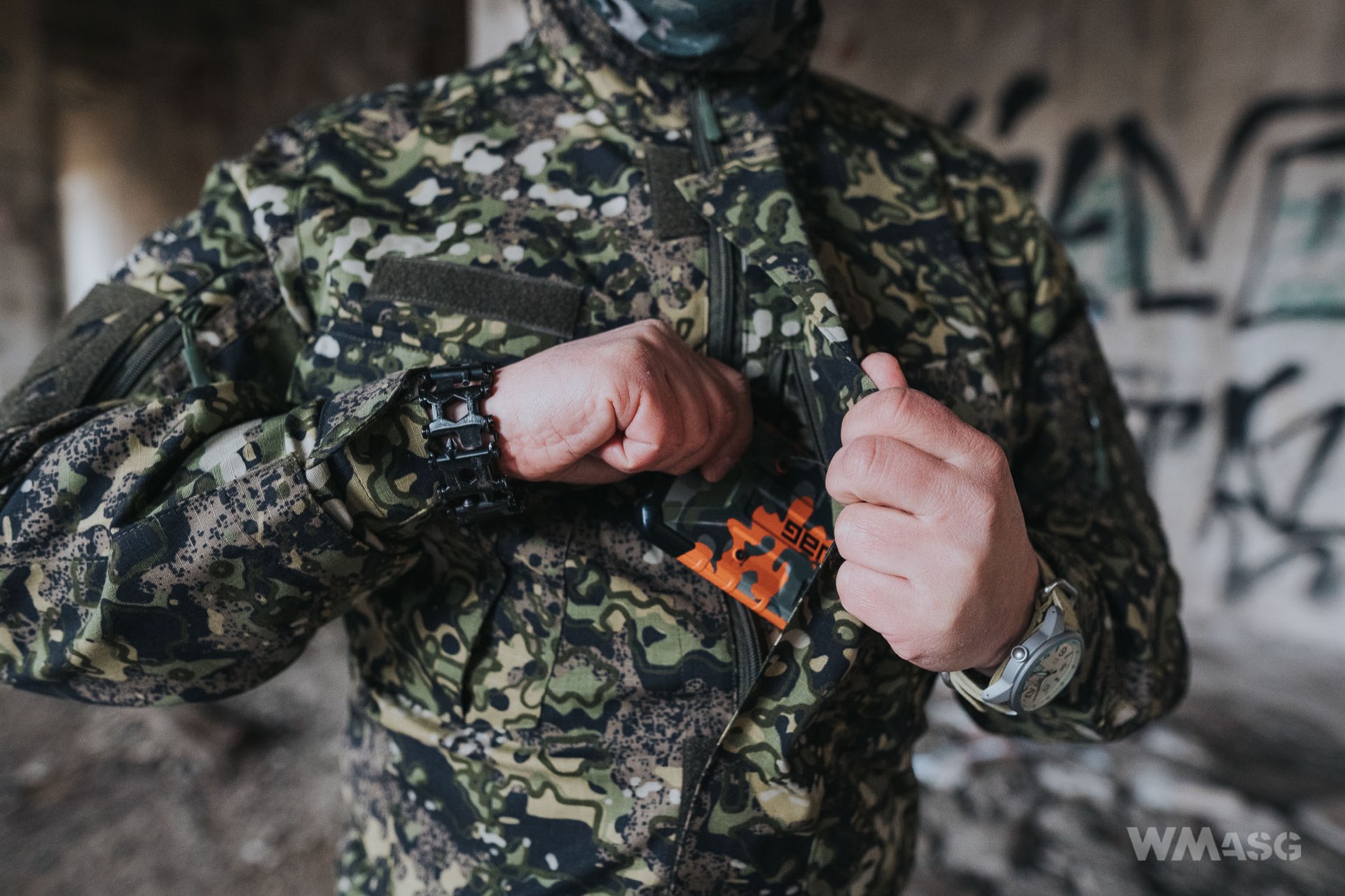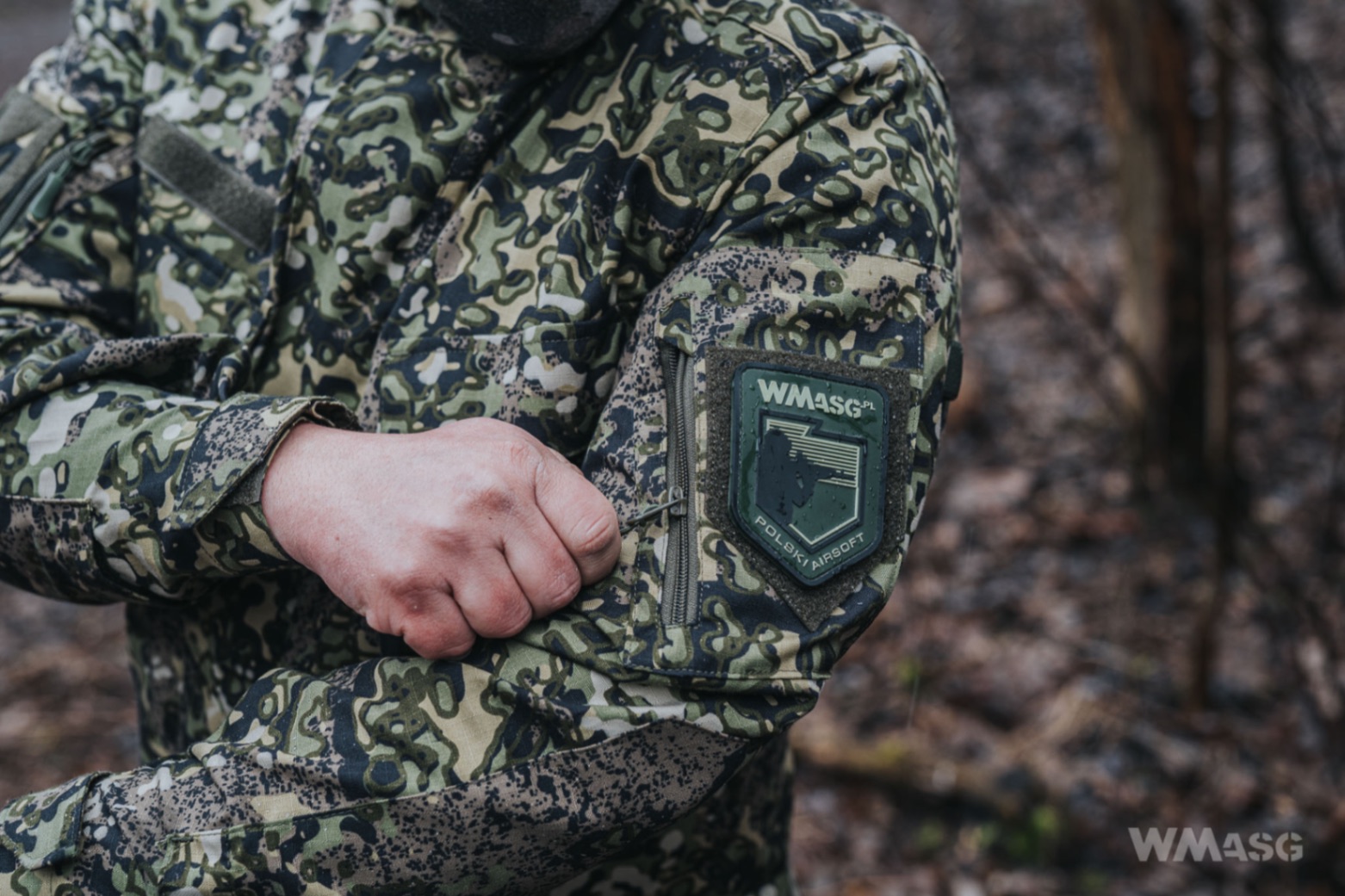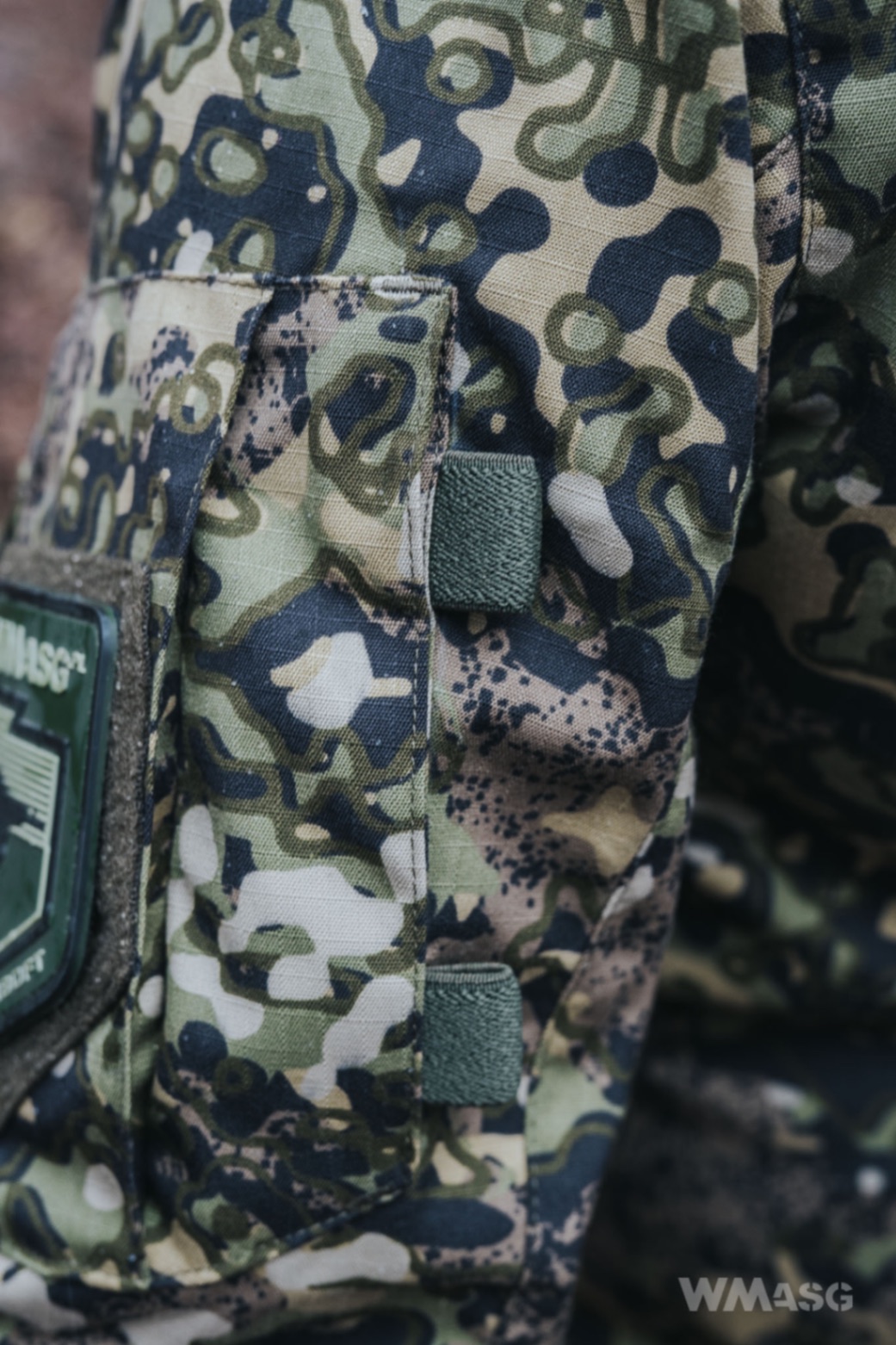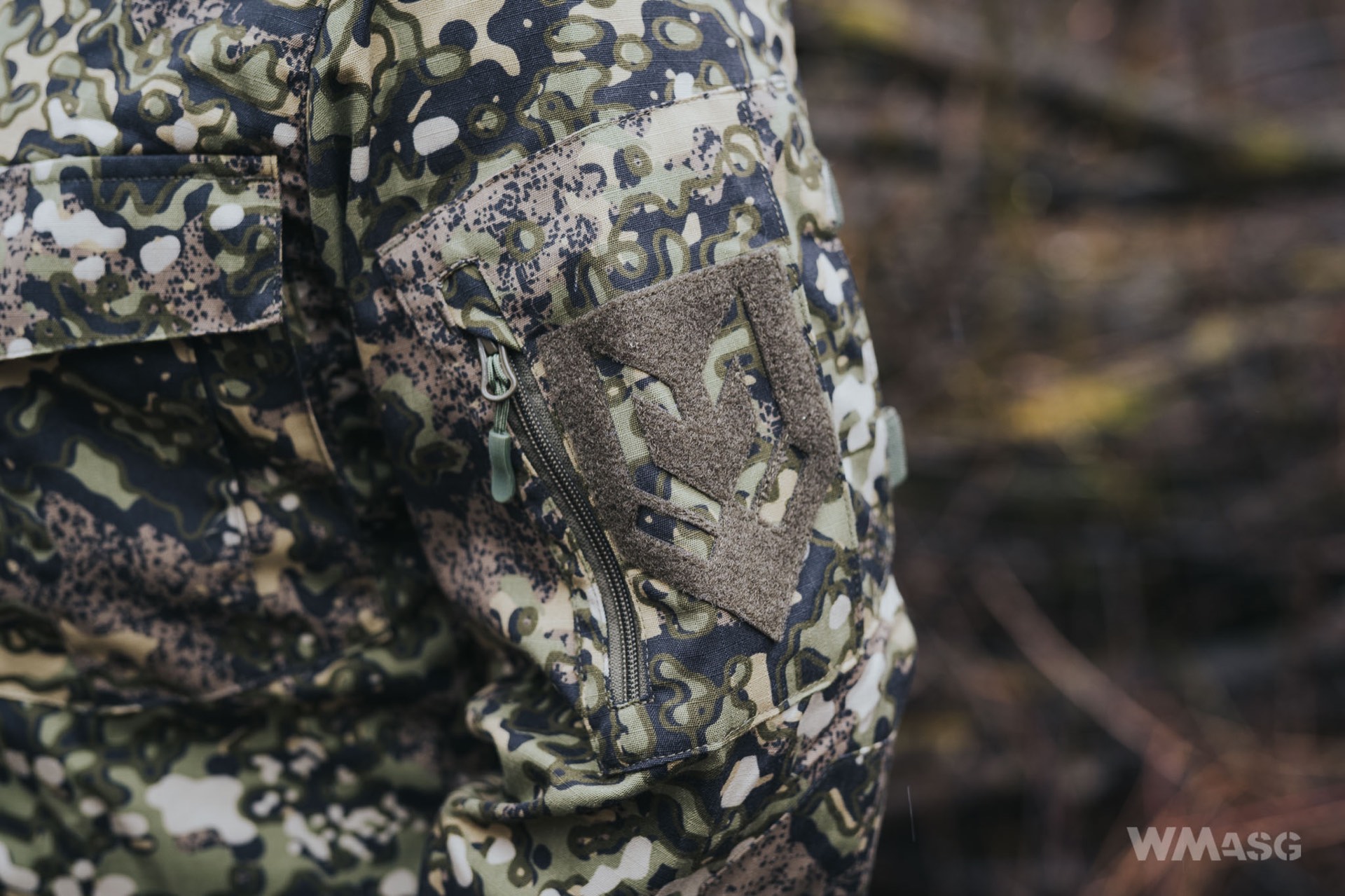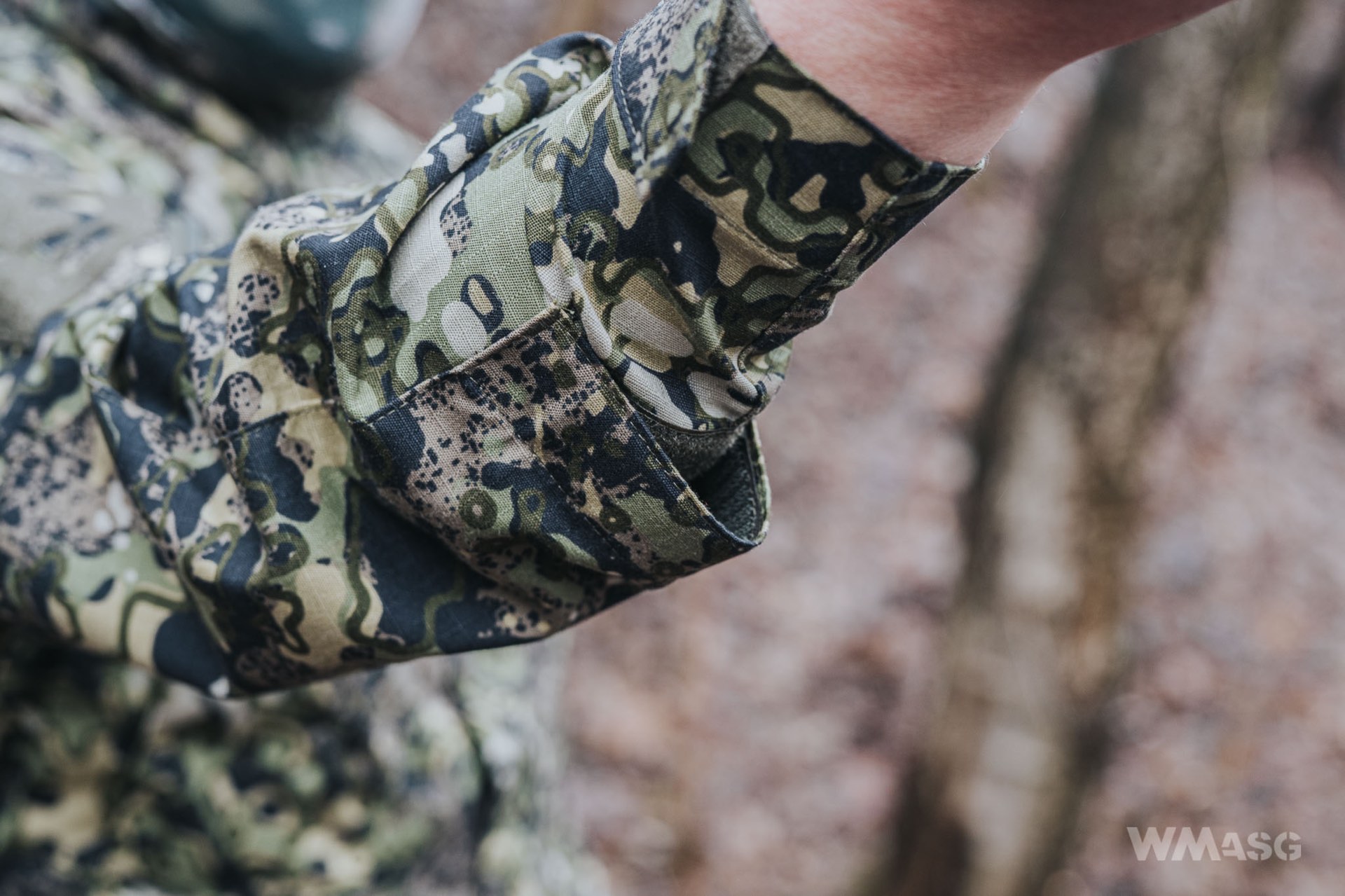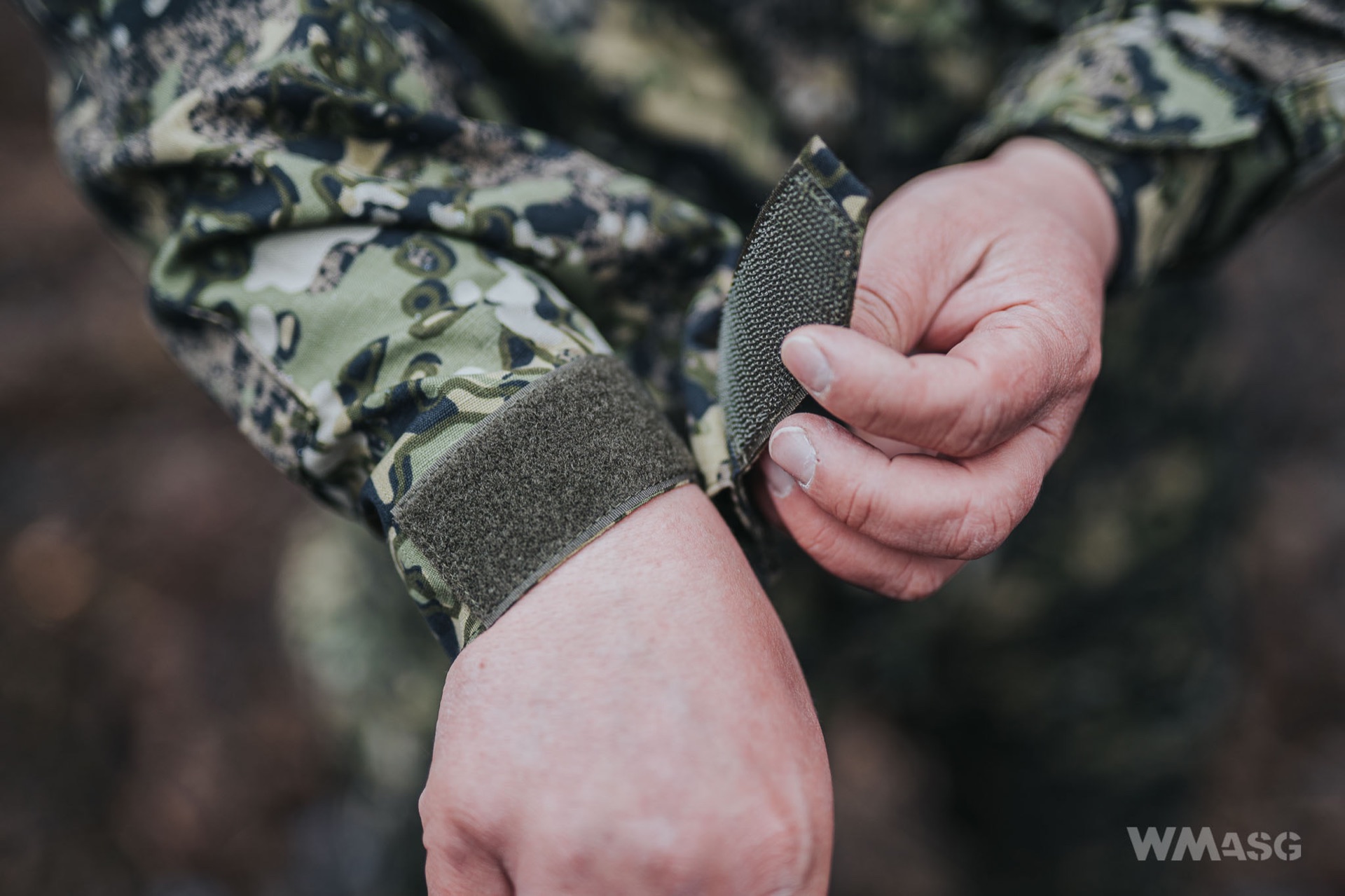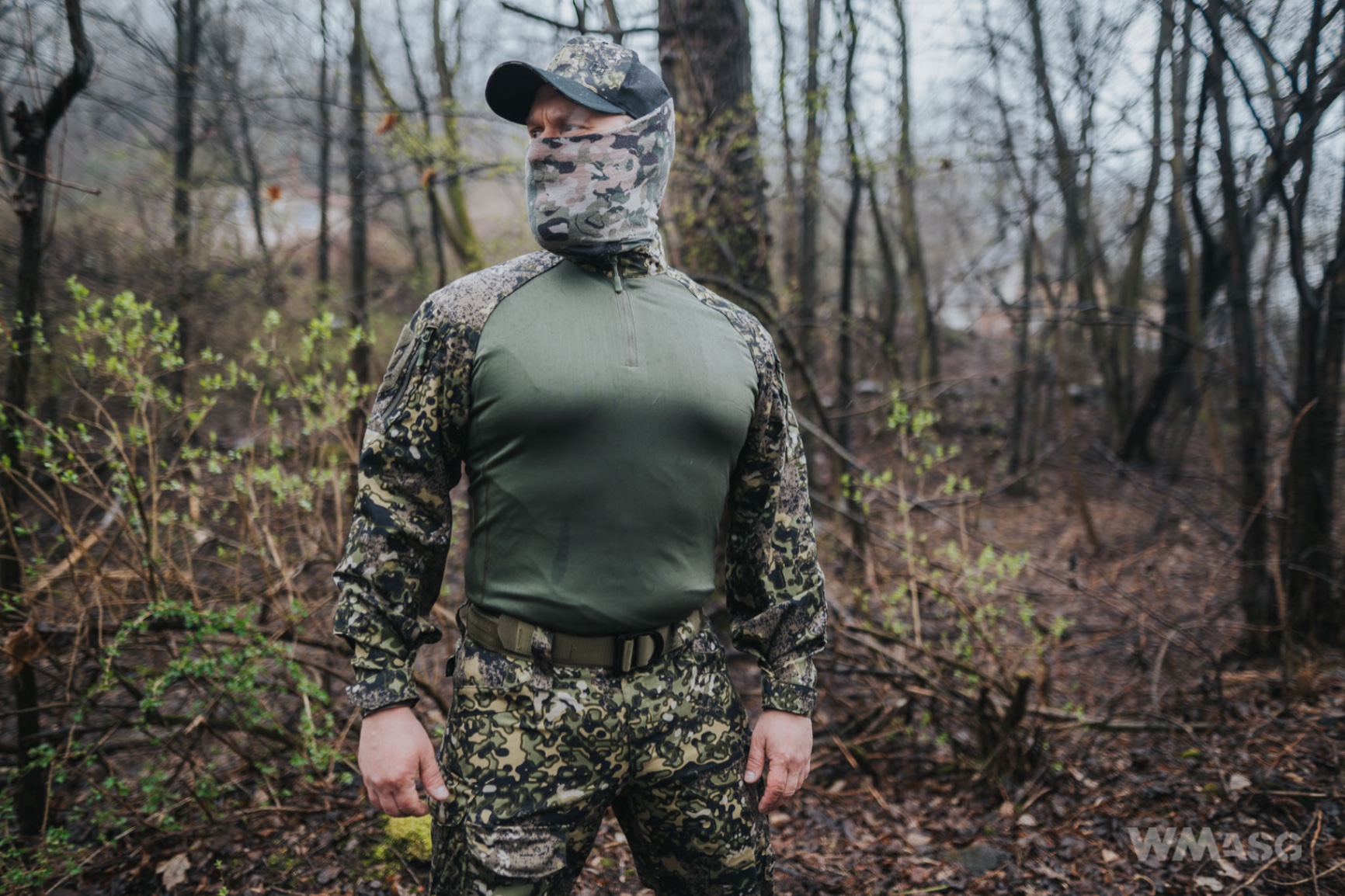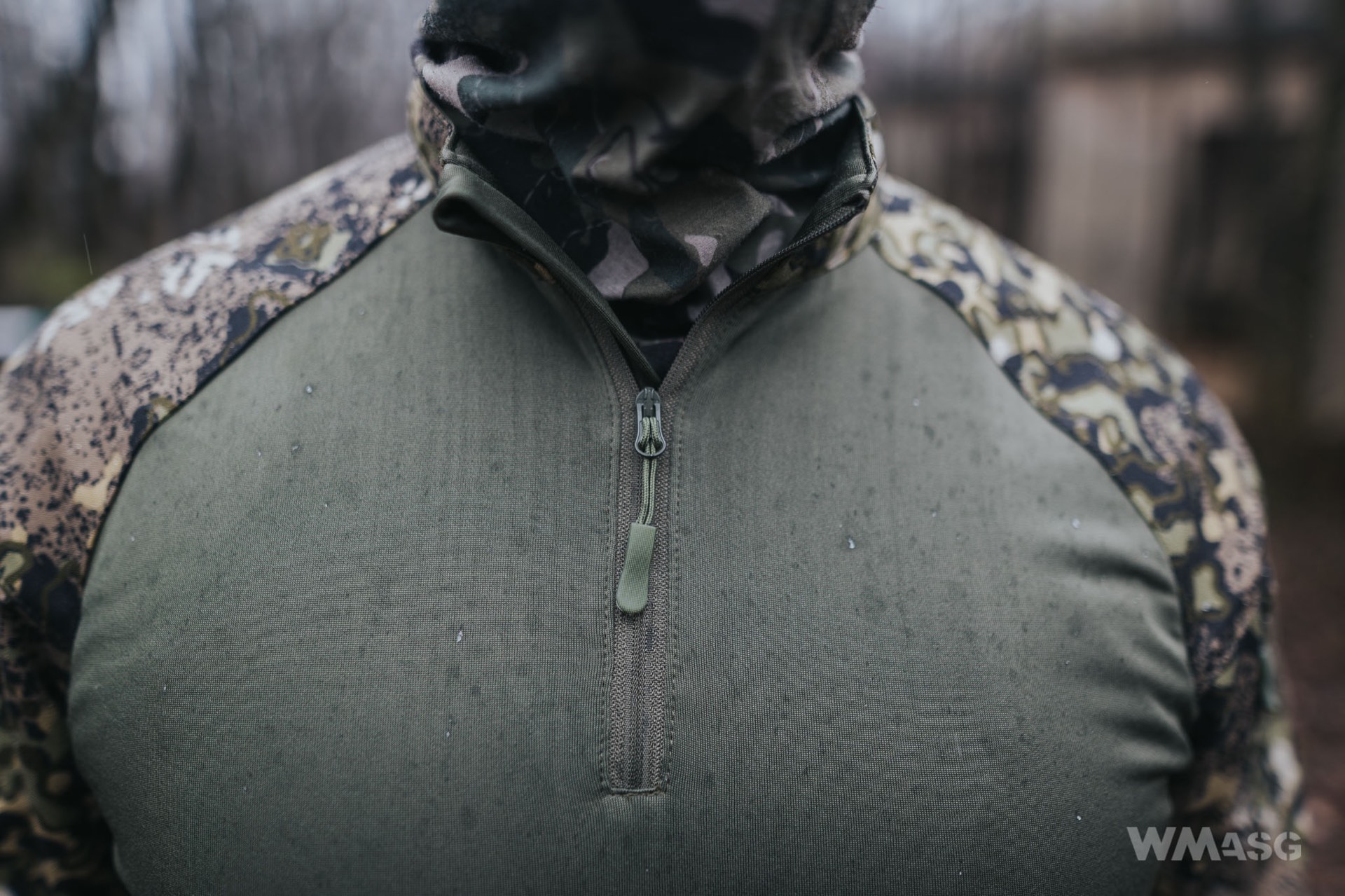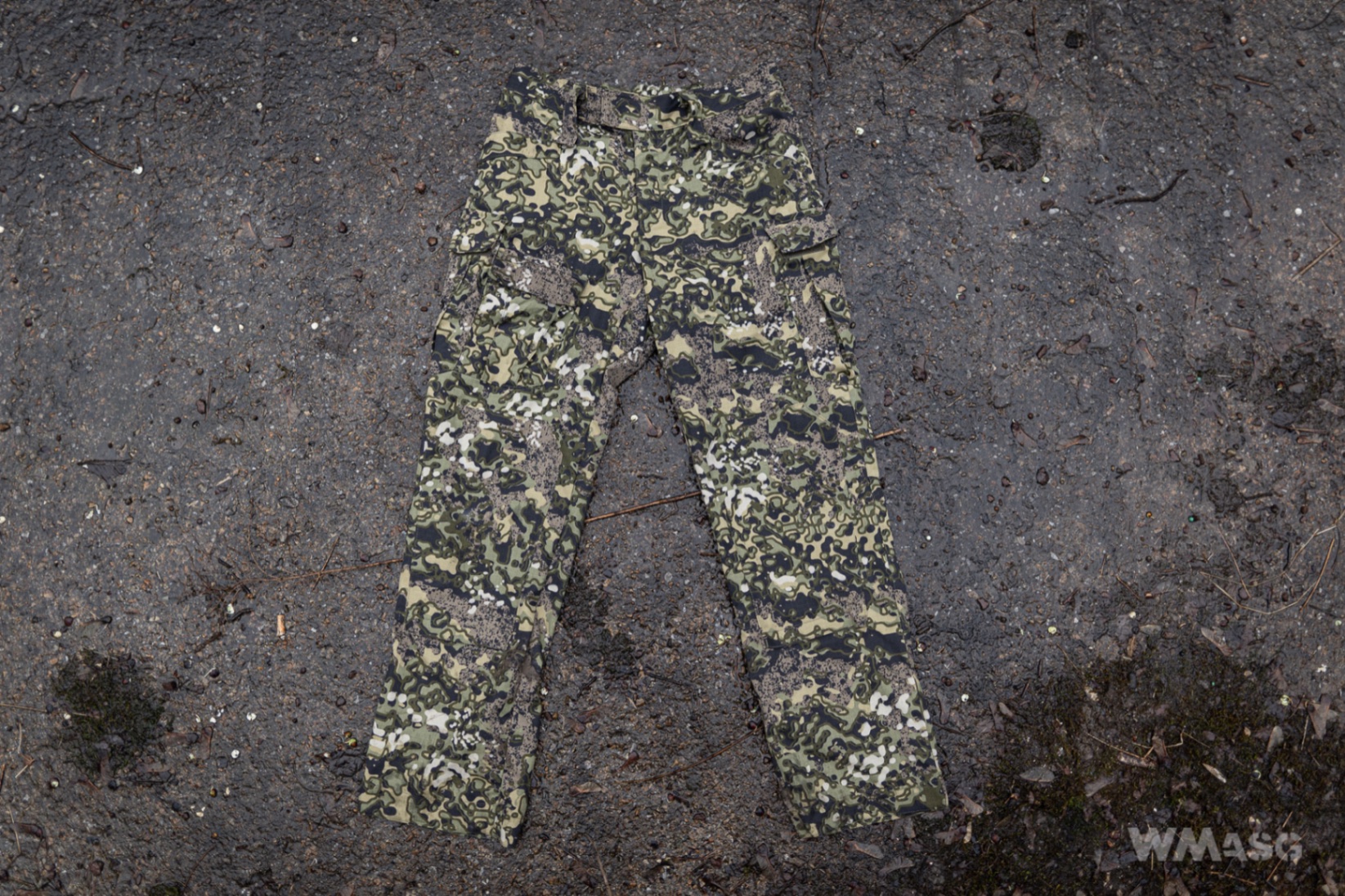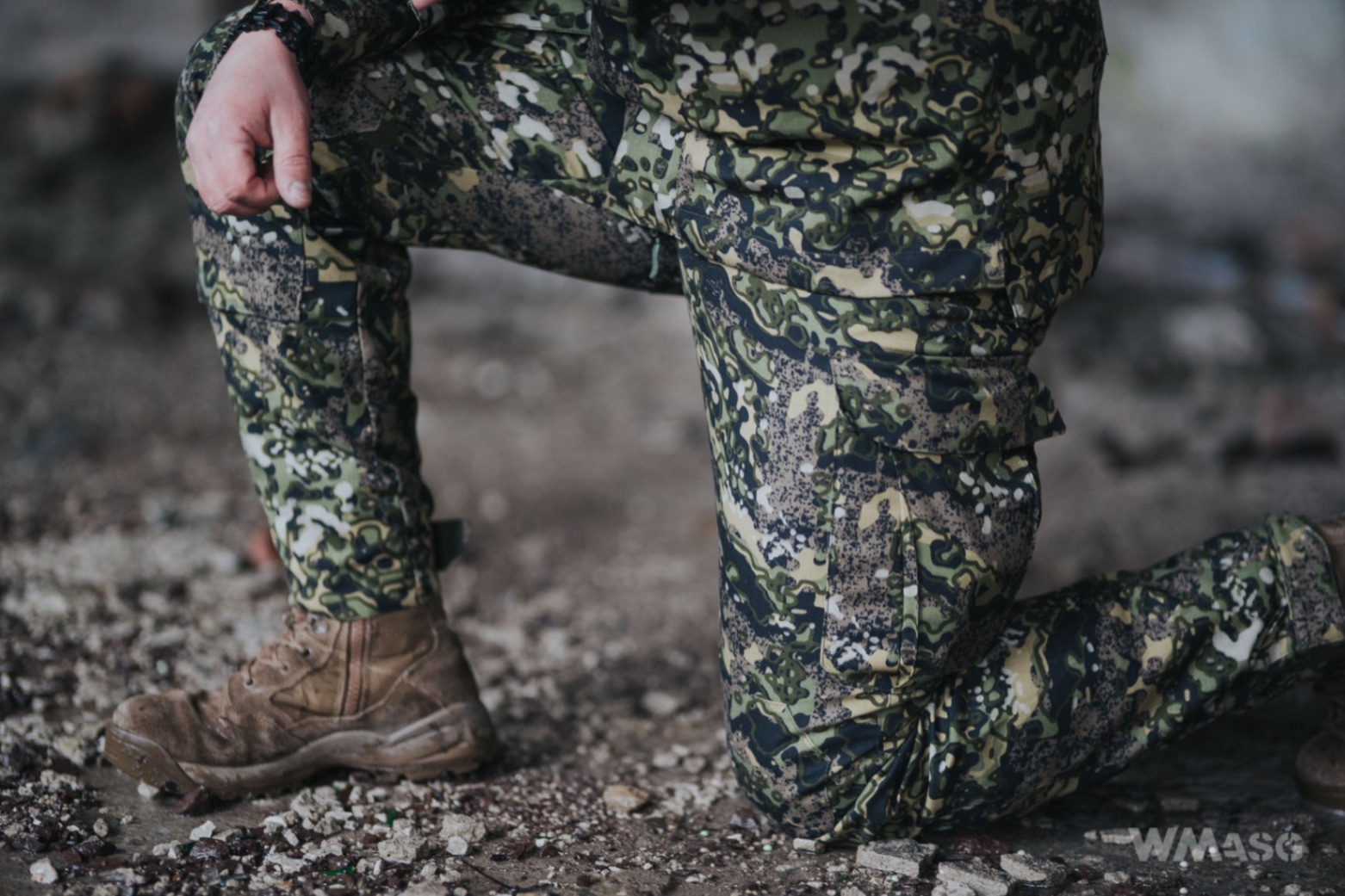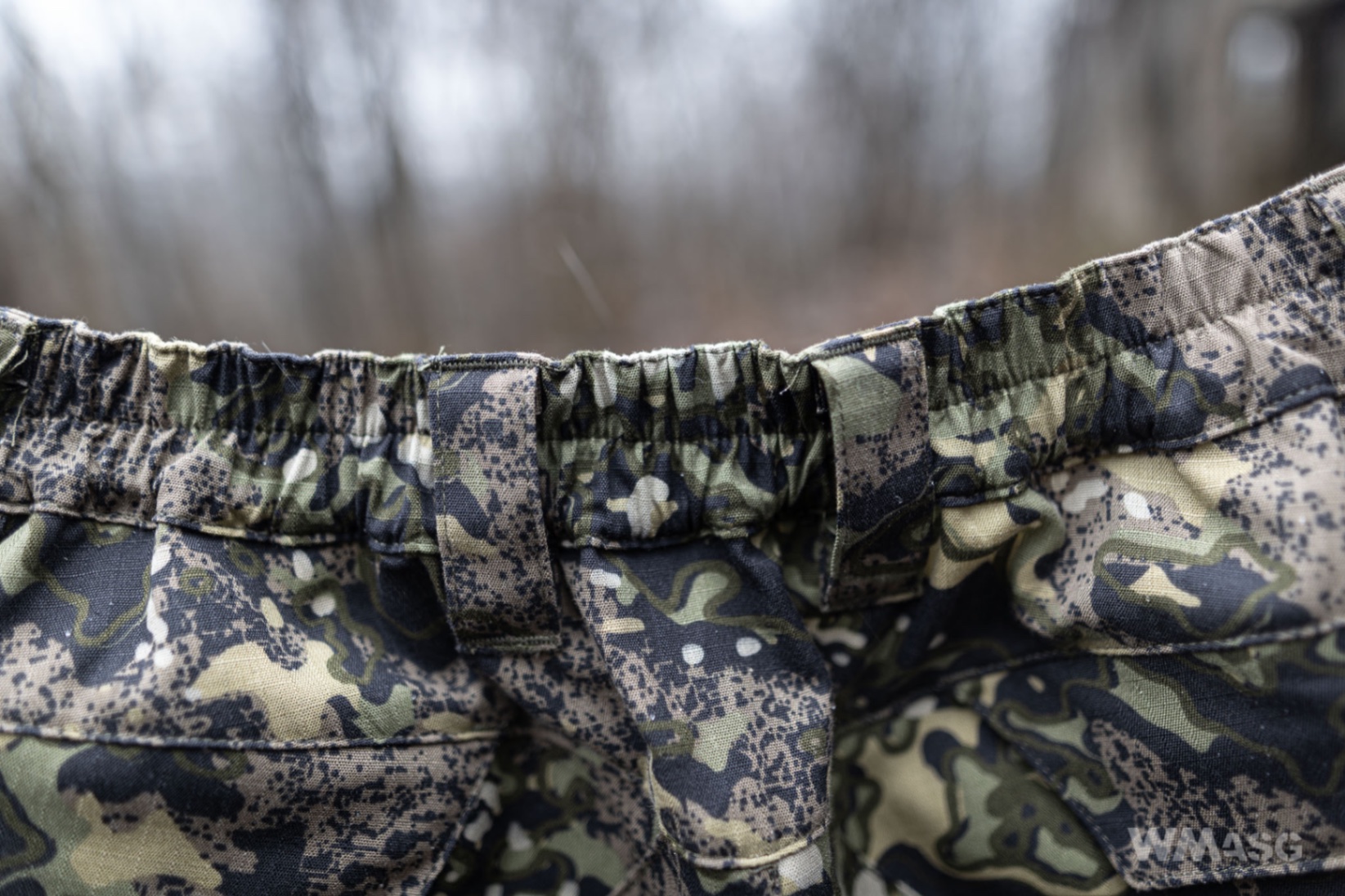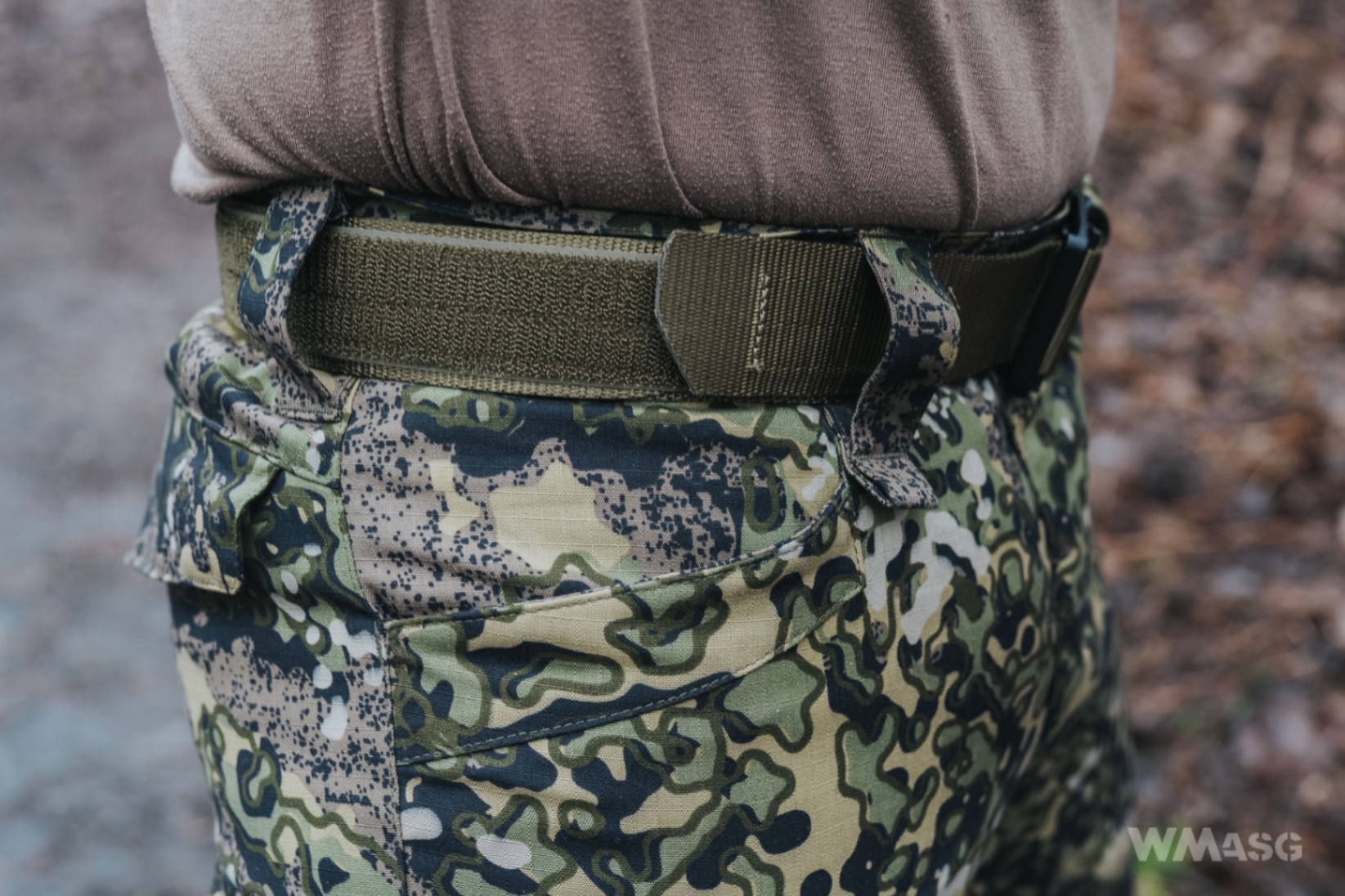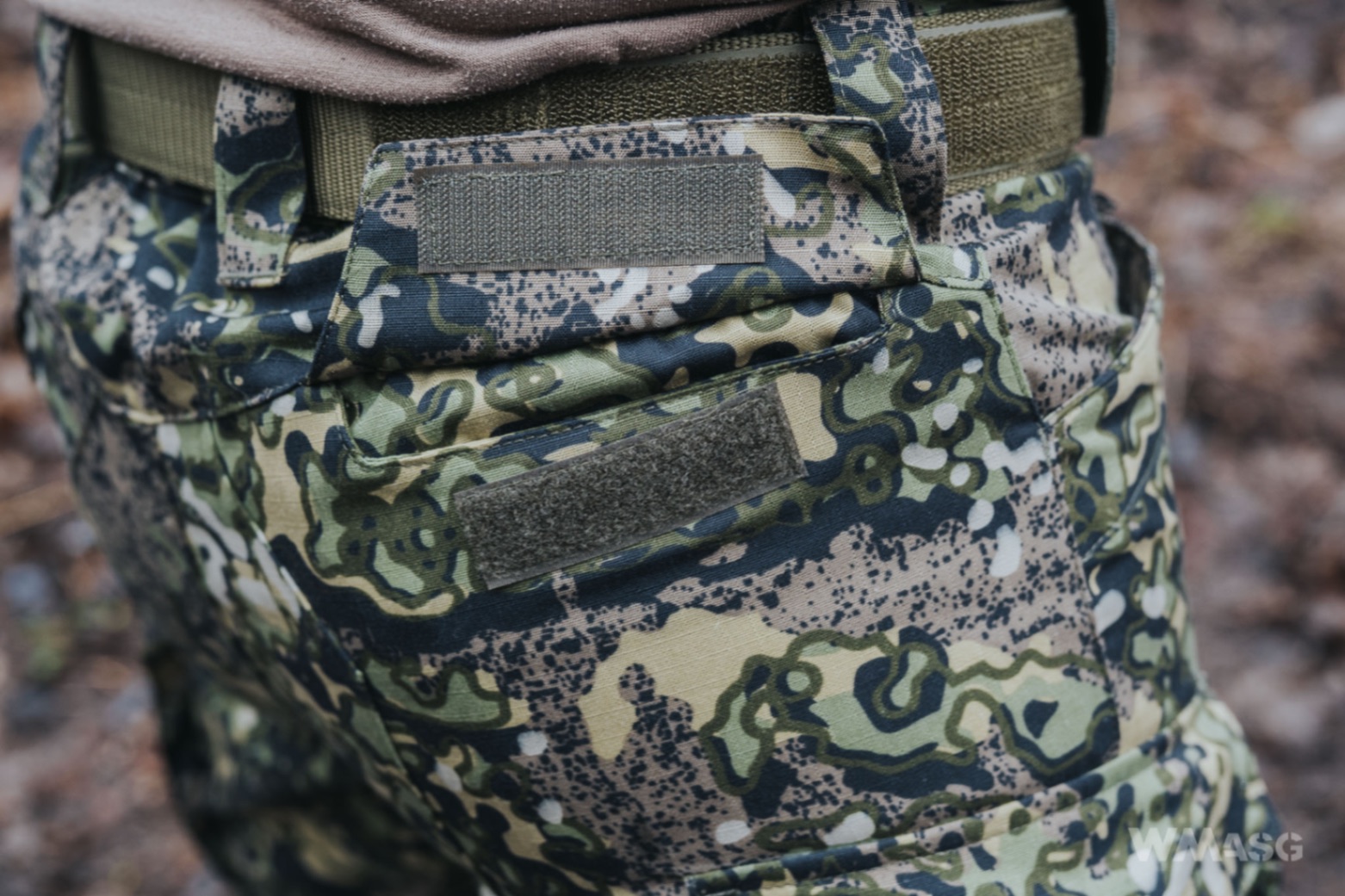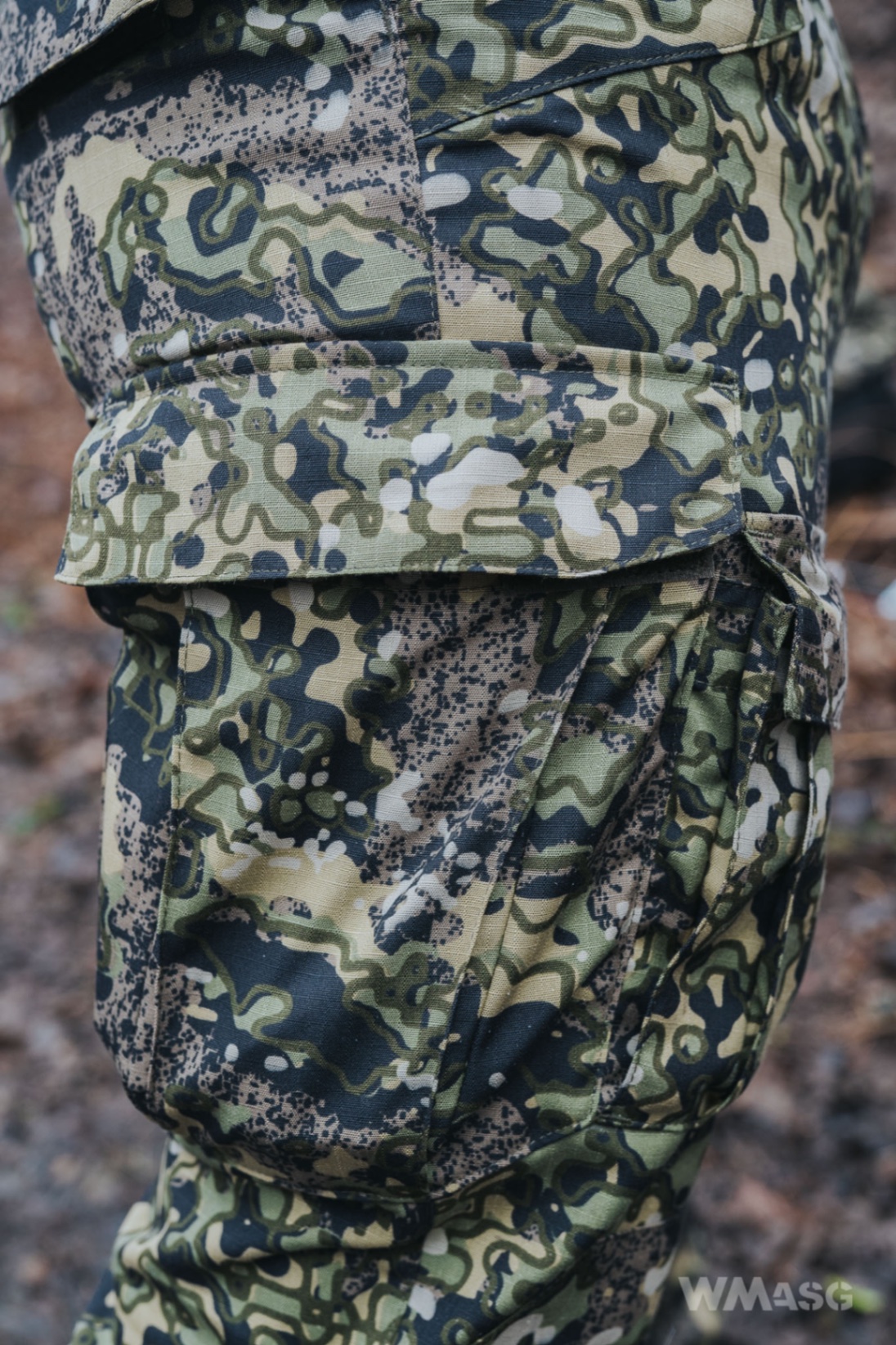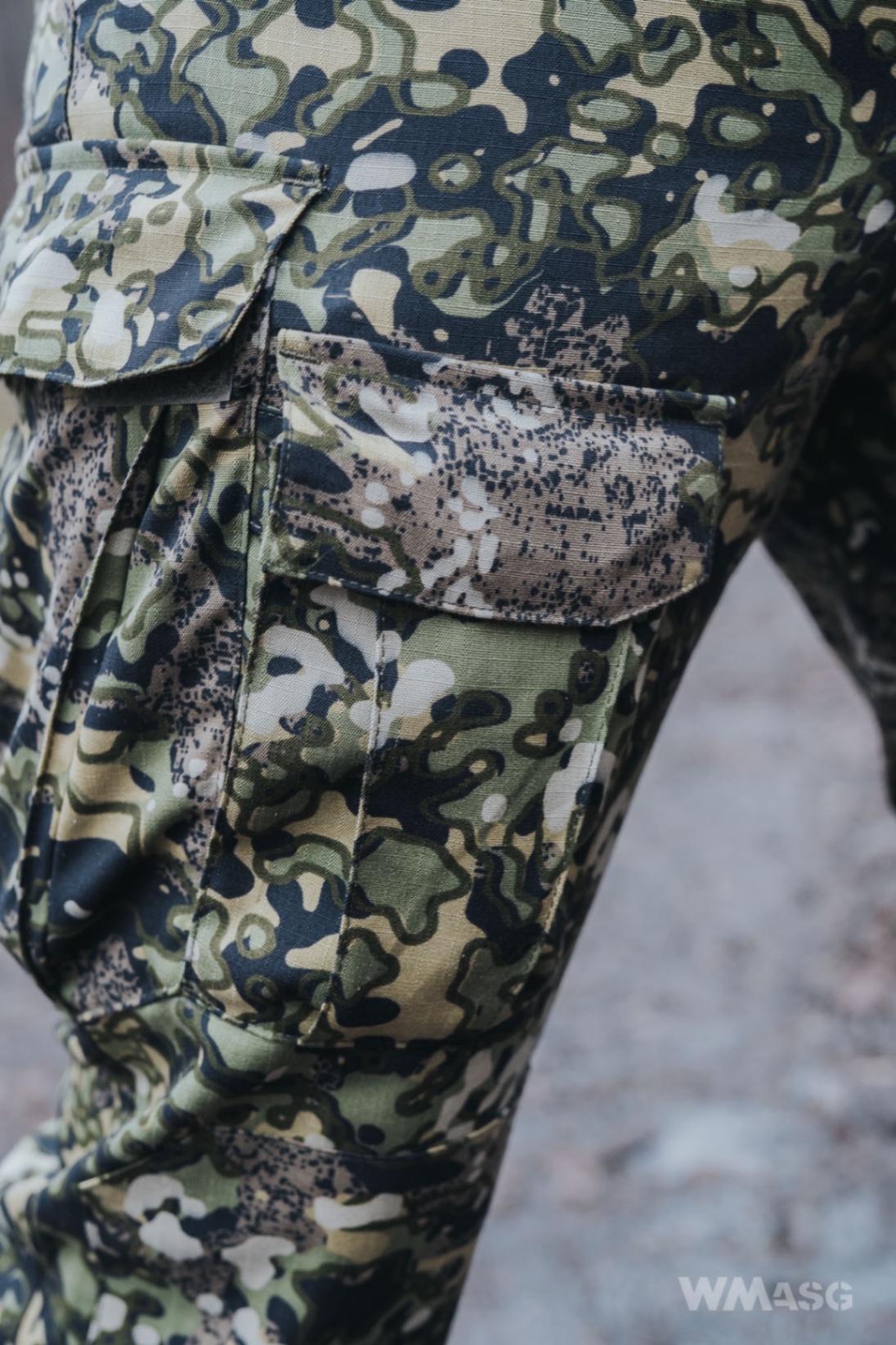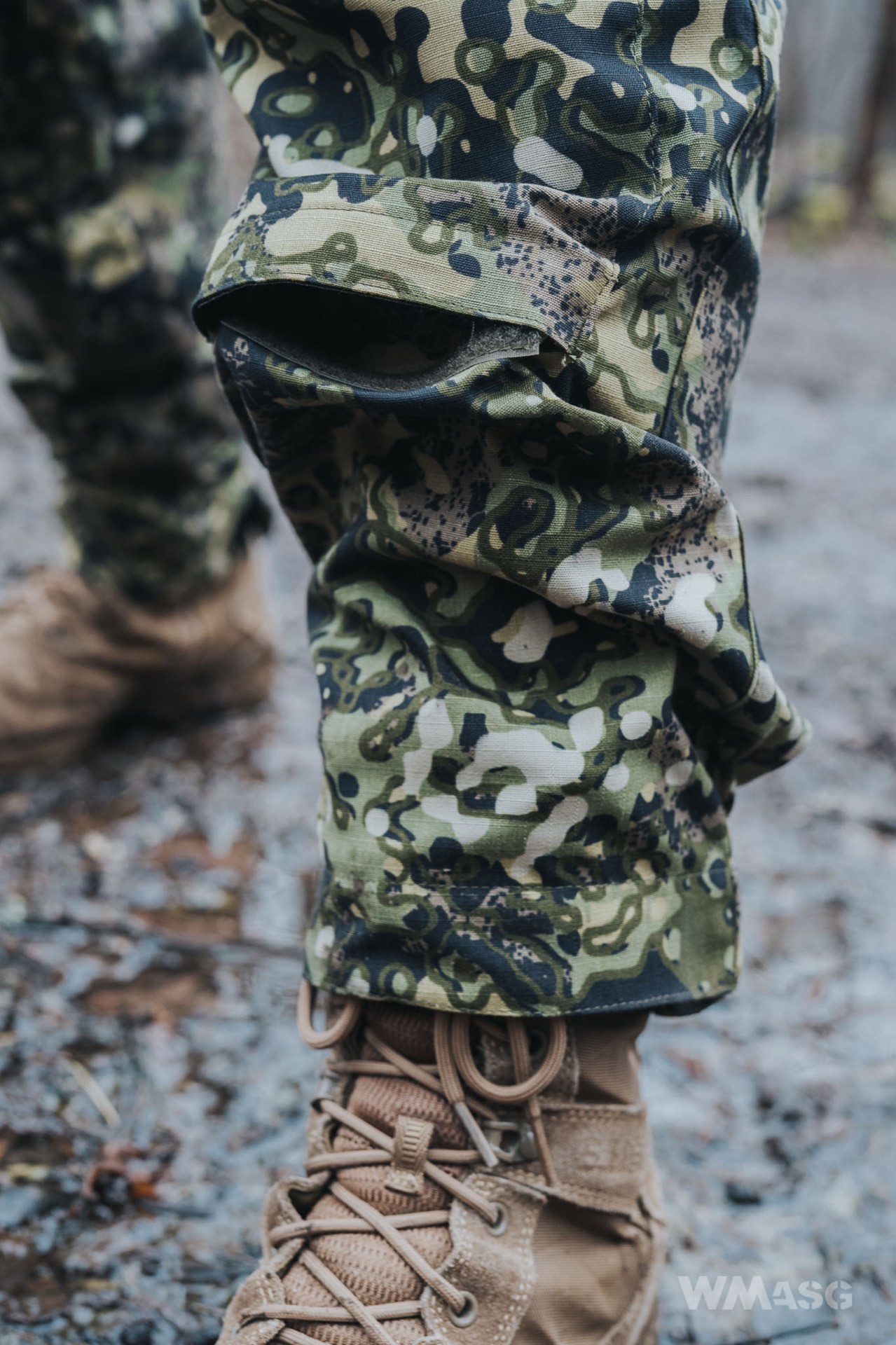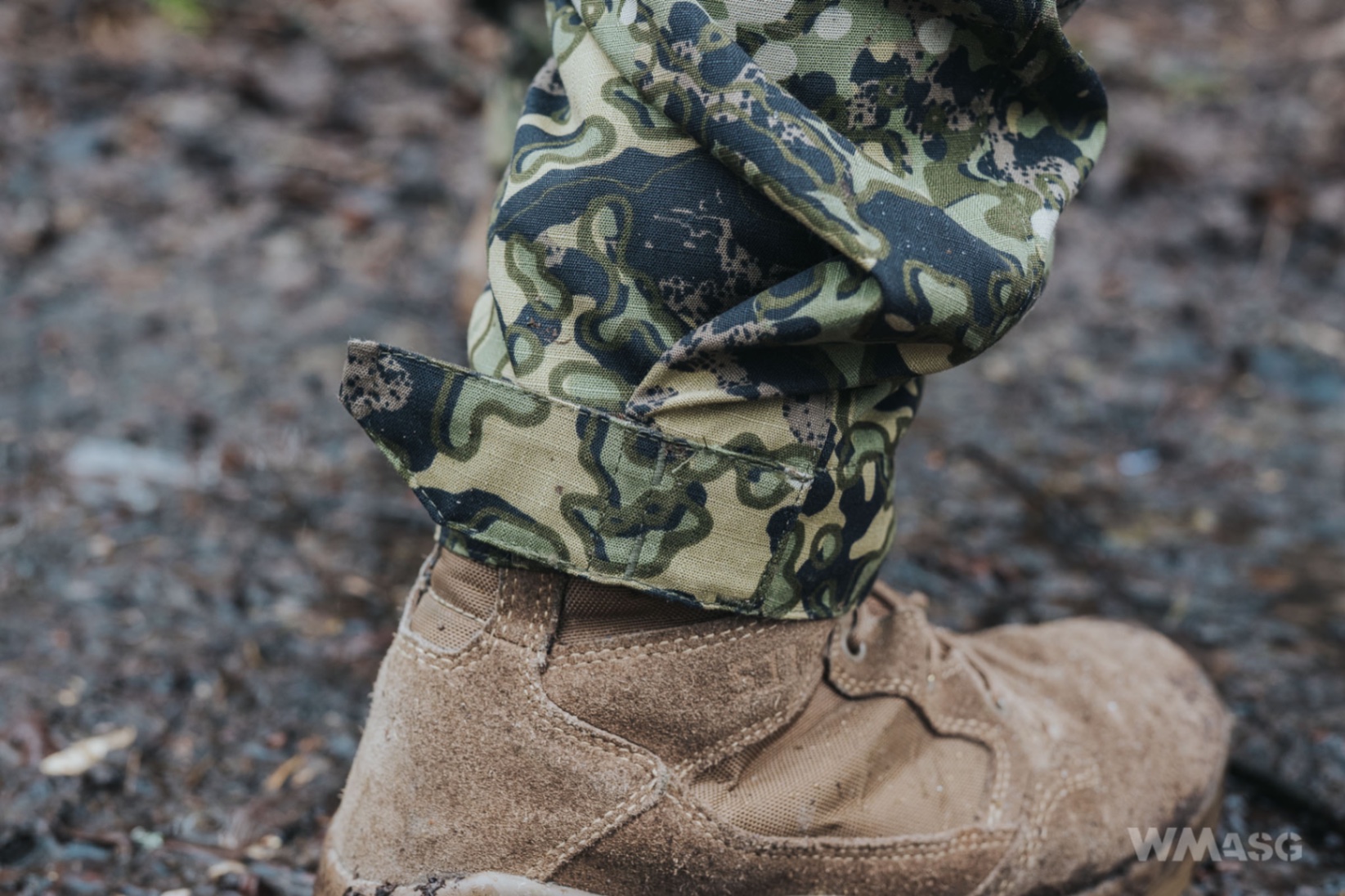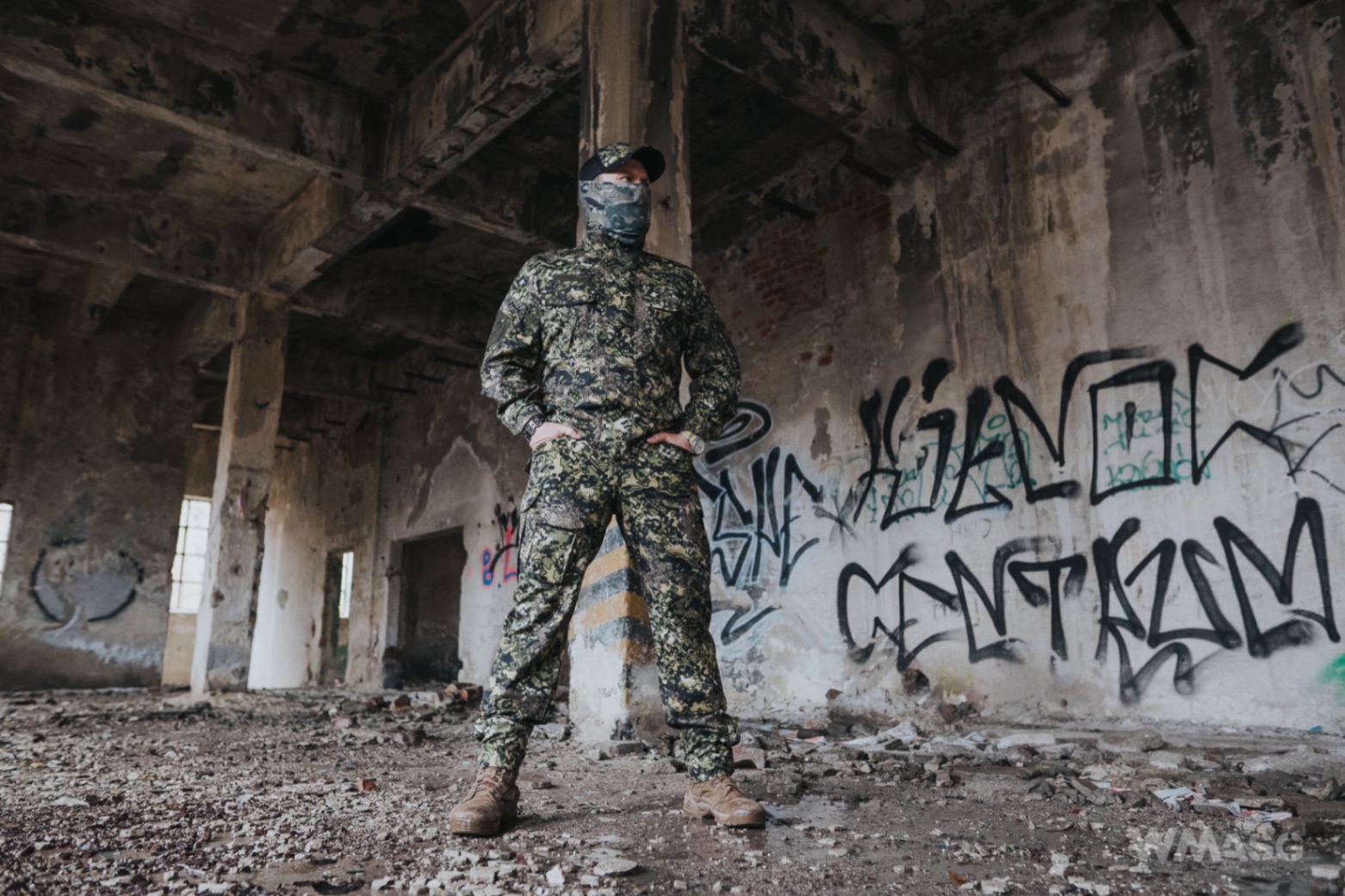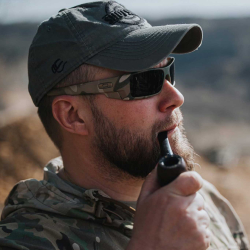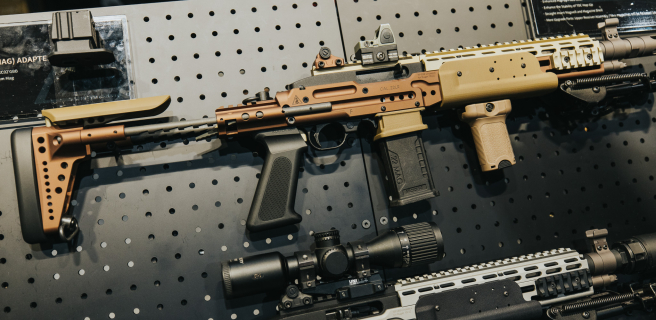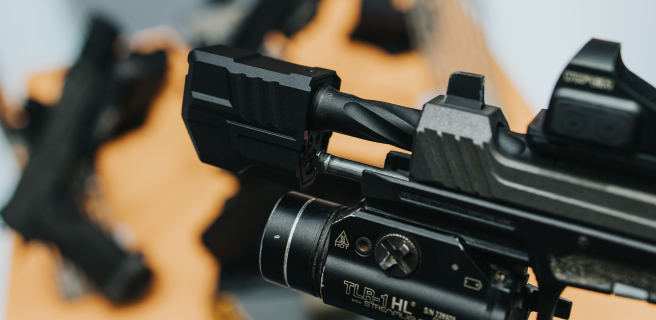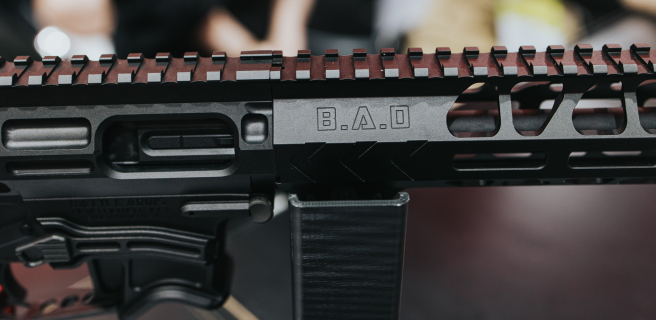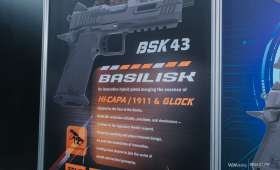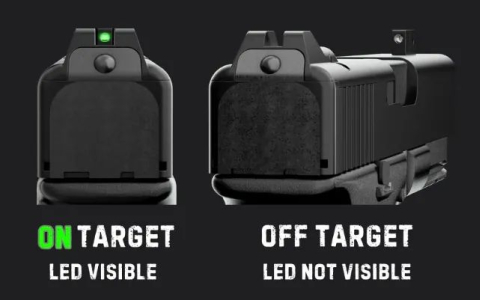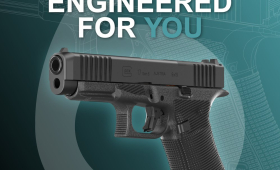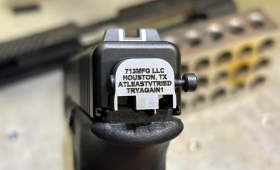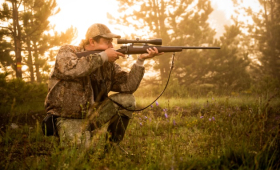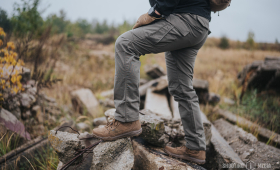THE MAPA CAMOUFLAGE AND ITS STORY
In order to present a detailed history of the "exit" of the MAPA camouflage to a wider group of uses, I will describe briefly all three attemmpts that finally made in possible. The knowledge of the average reader about this camo pattern comes from discussion forums, where in October 2012 photos of prototype uniforms of the Gdynia-based SPECOPS company, sewn from material covered with (then experimental) MAPA camouflage, were posted. Several benchmark photos were revealed, and… that was basically where the subject died, at least publicly. Moreover, SPECOPS was known to make their products (not to mention their uniforms) basically unavailable to the retail customers. No wonder that, apart from a few voices of enthusiasm, the community on discussion forums quickly forgot about this news and didn't even expect that something concrete will to come out of it. The topic came back to life a few years later, in the year 2016, an important landmark for this project. (https://wmasg.com/en/news/view/7055 ; https://wmasg.com/en/news/view/7081), while in the following year, the topic of MAPA began to gain momentum and new information related to it appeared every now and then. The culmination of all this was information about the acquisition of an exclusive license for the MAPA camo pattern by Przedsiębiorstwo Sprzętu Ochronnego Maskpol S.A. (part of the Polish Armaments Group) and a presentation at the Kielce MSPO 2017 fair (https://wmasg.com/en/news/view/7749 ; https://wmasg.com/en/news/view/7796) the concept of ageneral military DROMADER program, which was almost entirely presented in one of the variants of the MAPA camouflage. The following year, several concept images and photos of different camouflage variants appeared (the BLACK version was my personal favorite), a series of further photos showing the uniform for the DROMADER system (https://wmasg.com/en/news/view/8118) and... more and more information that the MAPA will not be used after all.
<iframe title="YouTube video player" src="https://www.youtube.com/embed/SLYELaGG2jw" width="560" height="315" frameborder="0" allowfullscreen="allowfullscreen" />
Of course, I omitted any individual (and more like teasers or a very small scale serial sewing of several elements than an actual implementation for mass production), which were showed at the WMASG forum or fanpages on social media - I mean both information about backpacks and photos of uniforms in a cut similar to wz. 2010 or (maybe one) MBS-3.
At the beginning of 2021, there was unexpected information about the upcoming entry of the MASKPOL company into the civilian military clothing market, presenting the "commercialized" variant of the uniform in the MAPA camouflage (MAPA B will be available for purchase). The first batch of the uniforms (they will be available around mid-May and are already appearing in some stores), according to the manufacturer's declaration, will consist of:
- combat jacket (CJ-01);
- trousers (CP-01);
- combat shirt (CS-01);
- caps (several variants);
- and backpacks (according to official information produced in cooperation with Wisport).
Thanks to the courtesy of MASKPOL we had the opportunity to test and see in the field the possibilities of the first three of the above-mentioned products, i.e. sweatshirts, trousers and combat shirts. But before I describe the outfit, let's briefly discuss ...
THE MAPA B CAMOUFLAGE
Undoubtedly, the main role of this text should be to describe the MAPA camouflage - regardless of the type of uniform or the usefulness of the items made from the material covered with it, it was the MAPA that has strongly imprinted into the consciousness of the Polish military circles in general, awakening the imagination of future users. But let's go back to the origins of this pattern and briefly establish what we are dealing with. Most of the news and entries about this camouflage begin with a reminder that it is an original design of PhD Maciej Dojlitko, who developed the MAPA system as part of his doctoral dissertation entitled "Thr theory of the Deconstruction of the Visual Message. Military Camouflage Design Tools ”(ISBN 978-83-62759-81-1 from 2017). I highly recommend to read it, though its only available in Polish and can be found on the Internecie, because it is a very transparent elaboration of the general subject of camouflage, presenting the exact assumptions and the way in which one of the MAPA patterns described in this text was created. The main idea behind the designer was to create a multi-layer camouflage structure, with a macro (used to break the shape) and a micro (blending the broken shape with the background) pattern harmonizing with each other, enriched with a carefully selected color scheme. The author of the doctoral dissertation analyzed the vegetation located in the Republic of Poland, based on which, inter alia, a decision was made to dye individual camouflage variants. The effect of the applied layering of the pattern is the illusion of flat patern appearing as three-dimensional, according to the author's declaration, its effectiveness increases with the distance away from the camouflage wearer. The MAPA, as a military camouflage, is a dynamic pattern, intended to mask the silhouette (also in motion) against a different background of the surroundings. Does this solution work in practice? It is difficult to judge whether I will become "invisible" to a sharpshooter in a dense forest, but I know that when looking at the uniform elements in this pattern, it is sometimes difficult to see the contours of the pockets from a short distance, which effectively blend into the outline of the uniform. Camouflaging in the field depends on many factors: the season, the current colors of the surroundings, the shapes of the surrounding elements, lighting and shadows. In the preparation of his doctoral dissertation, Maciej Dojlitko also writes:
The effectiveness of camouflaging will be influenced by many factors (e.g. observation distance, camouflaging the head, hands, shoes, weapons which have a very characteristic recognizable shape, type and amount of equipment). The specific time of day, lighting conditions, weather, and even the psychophysical state of the observer or the optical instruments used for observation are important.
Therefore, it should be remembered that there is no perfect, universal camouflage, but MAPA B, as a military camouflage, designed for a diverse environment, in our flora, mainly mixed forest, deceives the eye perfectly.
In the following photos from our several sessions, despite the fact that they were taken so as to highlight the camouflage for the purposes of this article, you can see that what attracts attention is usually not the uniform itself, which in some places even disappears against the background (especially in the lower parts). It is worth noting that the photos were taken, among other places, in the areas of where airsoft games are held.
Paradoxically, the MAPA B camouflage can also work in some ruins and empty buildings. For urbanized areas, however, the MAPA C version was provided.
The SGR team and friends. One of the first to be able to wear uniforms in the MAPA B camouflage made by the MASKPOL company.
It is also worth noting that the MAP itself is a camouflage system (the author assumed the creation of an "open system solution"), which has been developed over the years, among other things, into the prototype "V2" versions - however, taking into account that the described uniform is currently offered in one variant, let's focus on it.
The MAPA in B variant ("forest pattern") consists of five applied colors and one base color (assumed to look like the undergrowth and tree trunks) which is the color of the fabric. Individual colors and irregular shapes have a specific purpose, generating the above-described effect based on a macro and micro pattern. According to the data included in this study, the pattern report was based on a vertical layout, with dimensions of 380 mm x 880 mm.
As our readers rightly noticed, this is what the last versions of the MAPA looks like: MAPA Black (so far it has not been produced), MAPA A, MAPA B and the 2012 prototype colors. We would like to thank Marcin Kordek for sending the above list. Previously, we published versions of MAPA taken from the author's doctoral dissertation, which have been modified over the years.
The Combat Jacket CJ-01
Let's start with the details that often add flavor and can tell a lot about the product itself. At the height of the neck there is a narrow ribbon for hanging the jacket and a tiny label with the size marked on it. Below, at the height of the chest (on the inside of the jacket) there are two more labels - on the left side there is a large, black one with a graphic presenting the manufacturer's half-logo, a QR code and... Morse code, while on the right side of the jacket there is a label containing the model name, a graphic presenting the jacket, half of the manufacturer's logo, a QR code, washing recommendations and information that the sweatshirt was made of a material (for the inquisitive - US23) with a composition of 50/50 (cotton/polyester) with a weave preventing further ripping (ripstop).
The fabric itself is very pleasant to the touch, and the applied dyeing does not affect its airiness and softness (unlike some camouflages, where a thick layer of paint causes a "crust" effect on the material). The material and the cut itself (and I do not mean the arrangement of pockets, but rather the fit and softness of the fabric) bring to mind what many people have used to like in the uniforms of the British Army (the iconic DPM). The jacket has been cut in a fairly neutral way (far from the "aggressive design" known, for example, from the stitched MBS-2/3 prototype also using the MAPA camo), although its above-average fit is undoubtedly noticeable and it is certainly not a typical "baggy" uniform.
The obvious solution is the "tuck" located in the central part of the back, which is supposed to ensure freedom of movement for the user when stretching his arms forward. An interesting solution, although not one that is quite appealing to me. It may seem that the standard "gills" at the height of the shoulder blades would be better because, in my case, the "central" solution wrinkles too much and does not give me a subjective feeling of complete freedom. We asked about this solution and it was decided that way bye the manufacturer because it looks better. The second curiosity that one can immediately notice is the difference in the length of the front and back parts of the jacket. This design gives the impression of dividing the jacket into three main "panels" - front left and right and back. The front is a few centimeters shorter, which is clearly visible when one puts the front and back together.
The CJ-01 in the central part is fastened with a two-way zipper covered with a "clothed" fabric flap. At the top, the zipper finishes with a soft stand-up collar without any adjustment (in my case the circumference of the stand-up collar is too large, which makes the material stick out from the neck). The lack of a possibility to adjust it and the fact that it is impossible to put it down (a soft collar and a rather stiff zipper going to the end do not help) makes it slightly disappointing. A stand-up collar should have more options in terms of its adjustment.
At the height of the chest (on both sides) there is one, slightly inclined pocket with access from the top, which is closed with a Velcro-lined flap. Above the right pocket there is a short Velcro tape for a name patch (or, for example, blood type patch).
On the left side of the jacket, at the height of the chest, there is a "Napoleonic" pocket hidden under a flap protecting the central zipper, access to which is protected by a shorter zipper. Reaching for it with a vest on is at least a controversial task, requiring more exercise.
On the arms, there is one flat pocket (its design allows one to increase the capacity and put a larger object inside), topped on one of the arms with two rubber bands for holding e.g. a pen or a lightstick. The angle of the pocket and the convenient zipper that opens it deserve praise - the pockets on the shoulders are efficient and very pleasant to use.
On the other hand, Velcro sewn on the pockets, laser-cut in the shape of the MASKPOL logo, deserve a slight critique, because their surface is relatively small, strongly undercut in the lower part and also cut out in the middle, thanks to which, for example, IRR markers in their lower part cause the corners of the patches to hang in air. In my opinion, a better solution would be to put a full Velcro with a logo-shaped stitch or supplying an interesting patch with the manufacturer's logo.
On the elbows there are quite large pockets for pads, topped with a Velcro fastener at the bottom.
The adjustment of the jacket around the circumference of the wrists is done by means of a standard Velcro tab to the desired size.
The CS-01 Combat Shirt
The combat shirt has the same layout of the pockets on the sleeves (and the base material from which they were sewn) as the CJ-01 jacket. Here it is also a fabric in the MAPA B camouflage, composed of 50/50 cotton/polyester. The main difference is visible in the stand-up collar (which is better cut and closer to the neck) and, obviously, in the material on the torso. In this case, it is a dark green fabric with a material composition of 95/5 polyester/lycra. The admixture of the latter makes the T-shirt stretchy and fits well to the body, while maintaining quite good thermal circulation. On the sides, long, wide, vertical wedges are sewn along the entire length of the torso, up to the armpit - this solution ensures a better fit of the shirt (although it is merciless for owners of at least a bit more fat around the waist - #combatshirtdoesnotforgive). In addition to the size label at the nape of the neck, one can find a second one hidden in the pocket on the right shoulder. On on one side, the label contains information about the model of the shirt, washing recommendations, material composition and a standard graphic showing half of the manufacturer's logo and a combat shirt graphic, on the other side... Morse code. Incidentally, I would like to point out that such placement may be a bit disturbing when using the pocket and in this case, it is worth considering using scissors. The material from which the torso is made is pleasant and soft to the touch and should not cause abrasions or chafing in any way, even after wearing a heavy vest for many hours.
The CP-01 trousers
Time for the part of the uniform that I like the most, i.e. trousers. At first glance, the cut is (to put it mildly) mysterious, because the camouflage pattern does its job and effectively hides the elements on the trousers. The second thing that immediately comes to mind is a relatively low waist, reminiscent of jeans and making the trousers tend to tighten in a place that is not fully expected (either one will accept it buying a larger size will be in order) . Upon looking closer at the trousers, you will notice that one is dealing with slim-fit cargo trousers that fit the user very well - the fact that the size of the trousers is given in two dimensions, i.e. circumference and length, also does a good job.
Of course, there are also labels with the same content as those used in the shirt. The waist circumference is adjusted to the user by means of a rubber sewn in about half of its length, so that the front fastening is done only with a short Velcro-lined tab.
The pants are equipped with four standard, flush pockets in their upper part. Two front ones with free access from the top, while the rear ones are secured with a Velcro-fastened flap. It's worth noting that the access to the front pockets is more vertical, which makes it harder for something to fall out of them. At the height of the thighs there are medium-sized cargo pockets, also fastened with a Velcro flap (fans of Canadian buttons, including myself, are disappointed). Here the advantage, and in this case the "disadvantage" of the material, is revealed. Due to its softness, the flap of the side pocket is flabby and it would be good of it is stiffer in the future. Noteworthy, there is also a smaller pocket sewn on the front of the right leg, located at the height of the thigh which is perfect for items that should be easily accessible, e.g. when driving a car. The length of the Velcro that is supposed to hold the flap has a huge downside, because it is definitely too short.
At the knee level, there are two quite large pockets for pads, into which I was able to easily put thick, convex protective inserts. The legs end with flaps to adjust their circumference, unfortunately the Velcro tape may be a bit too short to tightly fasten the leg on a shoe.
Summary
Looking from a bit more perspective, one could say that we are dealing here with an ideal combination of uniform features: a comfortable cut, very pleasant materials, modern and 100% Polish camouflage perfectly matching the native forest flora, sewn in Poland, from Polish materials (this is a requirement!) and in terms of price, it is places itself on the middle shelf. Moreover, it has been announced that a full range of clothes and gear in this camouflage we be made. Is it an ideal than? I leave this judgment to individual considerations. For me the camouflage and the material from which the uniform is made is a masterpiece. One of the goals of creating a new camouflage pattern, as intended for a soldier of the Polish Army, was to design a pattern that would be both effective at camouflaging and representative for the Polish soldier. In our opinion, the MAPA B scores high here, which is likely to play a key role on the civilian market. Among our editorial group, we have a few reservations about the cut of the uniform itself, which gives the impression the designers were not entirely sure what the uniform was supposed to be in the end. Whether was it to be a simplified field uniform or was it aspiring to be "quasi-combat" design (I would like to see a typical combat version in the future!). I see the asymmetrical arrangement of pockets, Velcro or even elastic bands on the shoulders as an attempt to give it distinctive features from the competition, although as I wrote, I do not fully understand this idea. And we would love to see, in some places, Canadian buttons instead of Velcro.
It is also worth noting that the sizes of the uniform closely correspond to what the manufacturer provides in its size table. This is important because the cut of the uniform itself does not forgive any mistakes made when choosing the size, therefore it would be advisable to strictly adhere to the sizes provided in the table.
To sum it up, we are very positively surprised by both the uniform and the camouflage and we keep our fingers crossed for the further development of the project (and further color variants!).


